Take Me to the Recipes
Imagine a land where fiery chilies tango with rich palm oil, where fresh seafood waltzes with hearty stews, and where cassava flour forms the comforting base for every delicious dance. This, my friend, is Angola, a country simmering with culinary delights waiting to tantalize your taste buds.
But Angolan cuisine is more than just an explosion of flavor. It’s a tapestry woven from centuries of history, where indigenous African traditions intertwine with the legacy of Portuguese explorers. Each bite whispers tales of resilience, cultural exchange, and a people deeply connected to their land and its bounty.
Ready to embark on this delicious adventure?
In this article, we’ll be your culinary guide, whisking you away to bustling markets overflowing with exotic spices, introducing you to iconic dishes like “muamba de galinha” and “funge,” and sharing the secrets behind Angola’s unique food culture.
Whether you’re a seasoned foodie or simply curious about exploring new culinary horizons, Angola promises an unforgettable experience.
So, are you ready to set your taste buds on fire? Grab your metaphorical fork and spoon, and let’s dive into the vibrant world of Angolan cuisine!
Take Me to the Recipes
Angolan Cuisine Key Takeaways:
- Angolan cuisine is a unique and vibrant part of African gastronomy.
- Traditional Angolan food dishes capture the essence of the country’s culinary traditions, local ingredients, and diverse influences.
- Exploring Angolan cuisine and recipes provides a deeper appreciation for Angolan culture and history.
- Must-try Angolan dishes range from savory stews to sweet delicacies.
- Traditional Angolan spices and cooking techniques contribute to the distinct flavors and textures found in Angolan cuisine.
Where is Angola?

Angola is located on the western Atlantic Coast of Southern Africa between Namibia and the Republic of the Congo. It also is bordered by the Democratic Republic of the Congo and Zambia to the east.
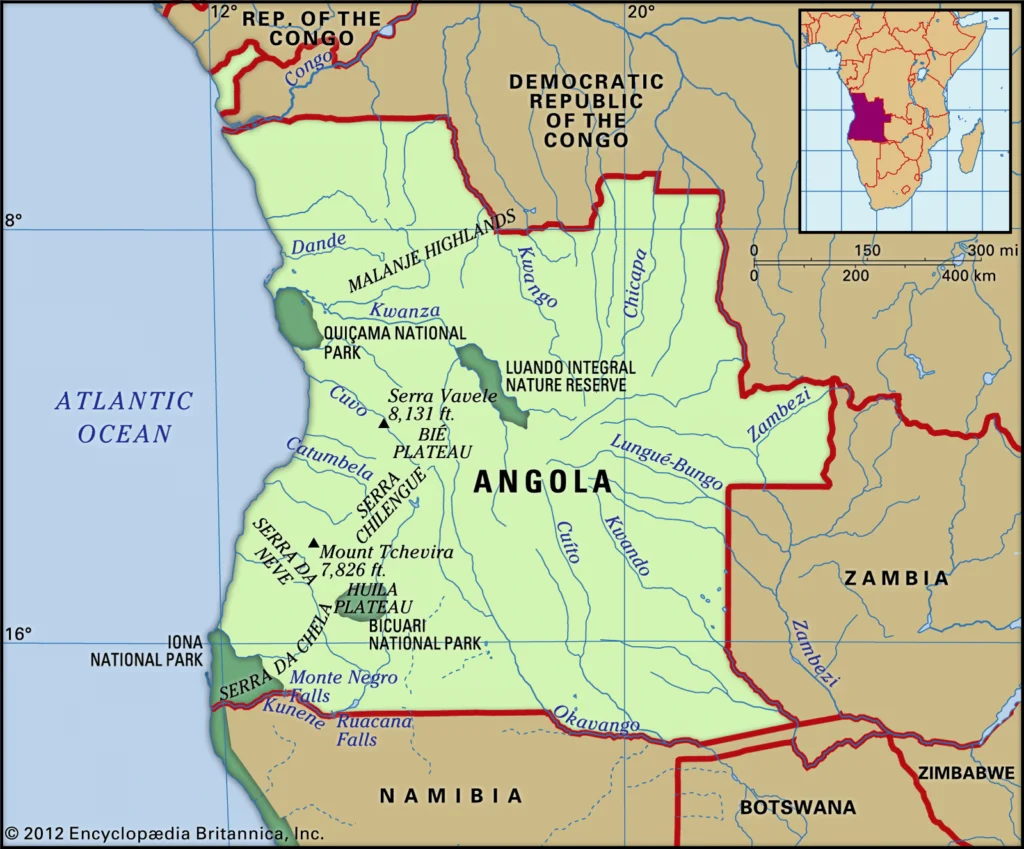
Index to the Contents
- Take Me to the Recipes
- More Articles
- Interesting Facts About Angola
- Angola’s History and the Affect It Has Had on the Cuisine
- What impact has the Climate and Geography had on Angolan Cuisine?
- Understanding the Essence of Angolan Food
- The Influence of Angolan Cuisine on African Gastronomy
- A Rich Tapestry of Flavor: Angolan Cuisine Unveiled
- Angolan Culinary Traditions
- Exploring Angolan Food Ingredients: The Flavors of Angola
- A Gastronomic Adventure: Traditional Angolan Cuisine Cooking Techniques
- The Role of Women in Cooking
- The Essence of Angolan Street Food
- Traditional Angolan Spices: A Flavorful Palette
- Must-Try Angolan Food Dishes
- Angolan Cuisine – Ceremonial Dishes
- How Healthy is Angolan Food?
- Exploring Popular Angolan Recipes in Your Own Kitchen
- Conclusion
- FAQ’s
Check Out the Following Articles
- North and South American Cuisine – A Culinary Expedition
- Europe Cuisine: Savor the Continent’s Best Culinary Secrets!
- African Cuisine: Discover the Bold Flavors & Global Charm!
- Asian Cuisine Unlock its Secrets – Taste, Health & Global Influence!
Savor iconic Angolan Food – Click on each tantalizing picture to open up the Recipe
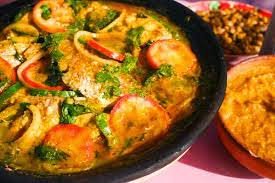
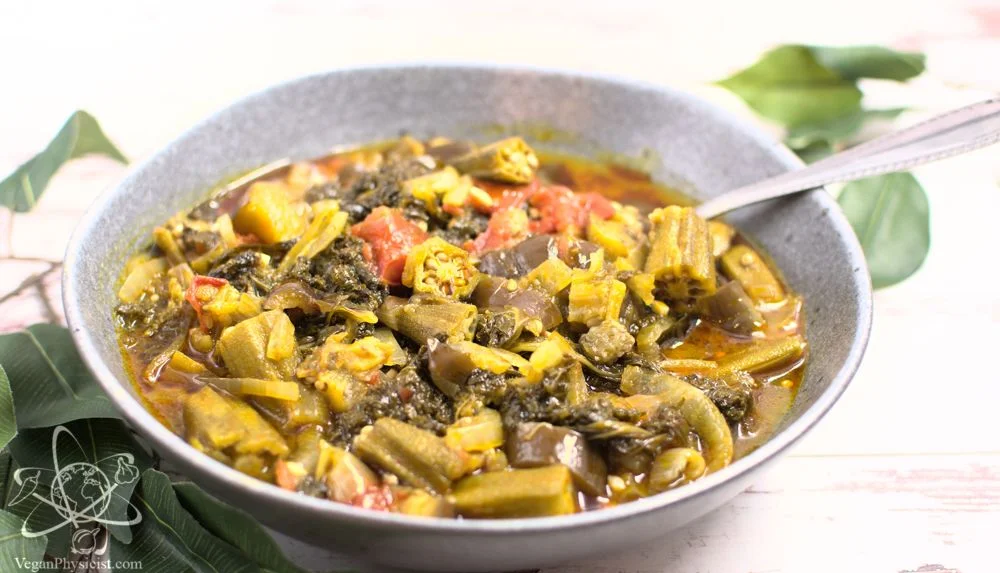
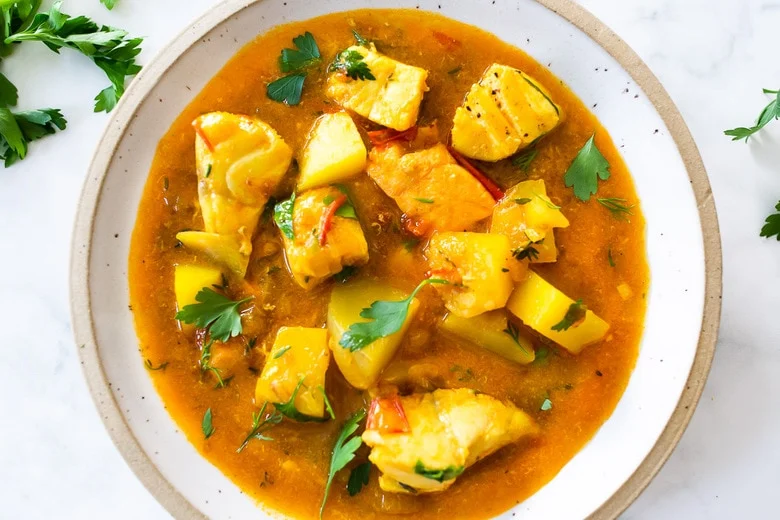


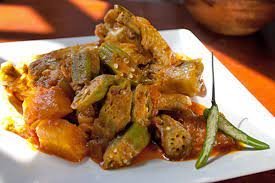
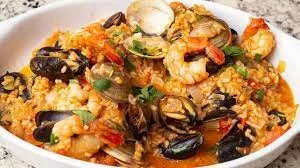
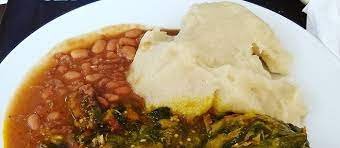
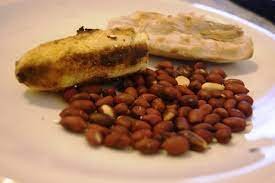
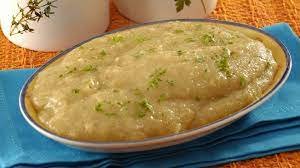
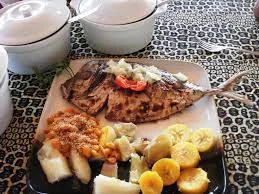
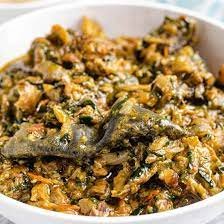
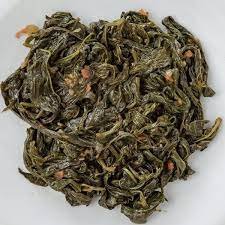
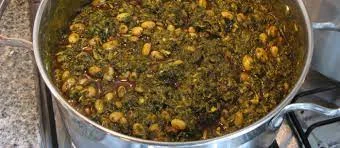

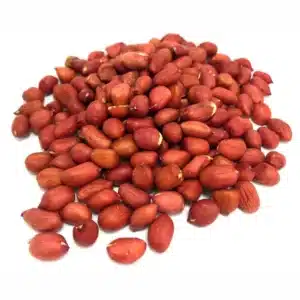


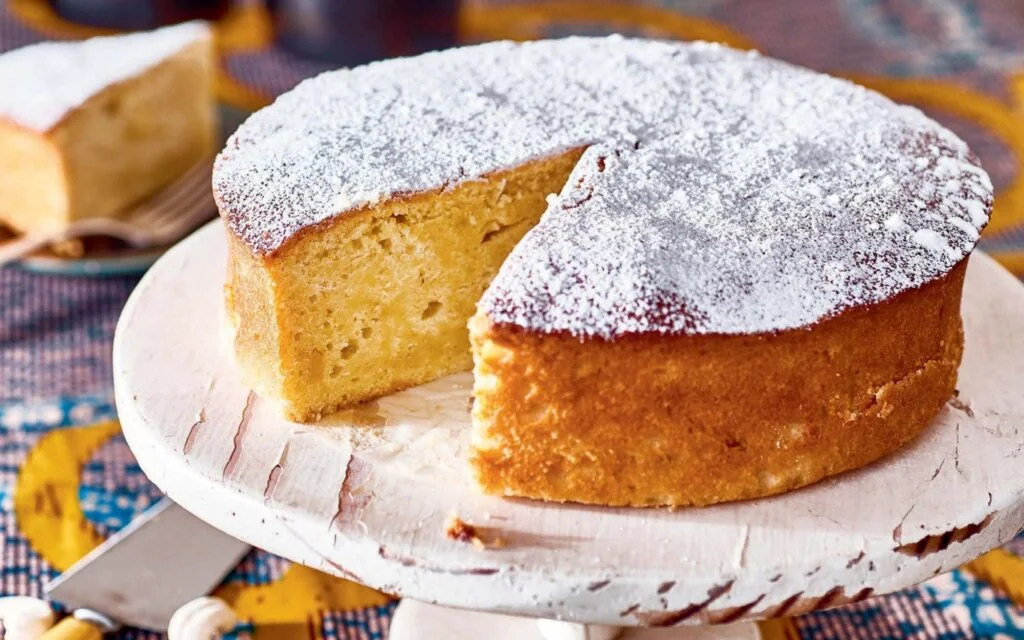
Interesting Facts About Angola
Land of Giants

Angola is home to the Giant Sable Antelope, one of the rarest and most majestic antelope species globally.
Found in the wild only in Angola, their unique appearance and rarity make them a symbol of the country’s wildlife conservation efforts.
Rich in Resources, Challenges Persist
Despite being rich in natural resources, particularly oil and diamonds, Angola faces significant economic challenges.
The paradox of resource wealth and widespread poverty is a complex issue that the country has been grappling with for years.
Unusual Time Zone Split

Angola spans two different time zones, with the western part of the country following the Greenwich Mean Time (GMT) and the eastern part observing Central Africa Time (CAT).
This time zone division is a unique feature in the country’s geography.
Land of Endemic Bird Species
Angola is home to several endemic bird species, including the strikingly beautiful Angola Cave Chat.
Birdwatchers and enthusiasts are drawn to the country’s diverse avian population, showcasing the importance of conservation efforts.
Largest Portuguese-Speaking Nation in Africa
As a former Portuguese colony, Angola is the largest Portuguese-speaking nation in Africa.
The influence of Portuguese culture is evident in various aspects of Angolan life, including language, religion, and cuisine.
World’s Highest Mortality Rate for Children Under 5

Angola has faced challenges in its healthcare system, contributing to the unfortunate statistic of having one of the highest mortality rates for children under the age of 5 globally.
Efforts are ongoing to improve healthcare infrastructure and services.
Fascinating Rock Art Heritage
The Tchitundo-Hulo rock paintings in Angola are a UNESCO World Heritage Site, featuring ancient rock art believed to be around 2,000 to 3,000 years old.
The paintings provide a glimpse into the region’s rich historical and cultural past.
Landmines Legacy

Tragically, Angola has one of the highest numbers of landmines per capita globally, remnants from the civil war.
This poses ongoing challenges to the safety and development of certain regions, necessitating ongoing demining efforts.
Remarkable Cultural Diversity
Angola is incredibly diverse in terms of ethnic groups and languages, with over 40 different ethnicities and numerous languages spoken.
This cultural richness contributes to a vibrant tapestry of traditions, music, and folklore.
Carnival Capital of Africa

Luanda, the capital of Angola, hosts one of the largest and most vibrant carnival celebrations in Africa.
The festivities, featuring colorful parades, music, and dance, showcase the lively spirit of the Angolan people and their love for celebration.
While Angola has its share of challenges, it also boasts a fascinating cultural and natural heritage. From unique wildlife to cultural diversity, the country presents a complex and intriguing tapestry of facts that reflect its history and current realities.
Angola’s History and the Affect It Has Had on the Cuisine
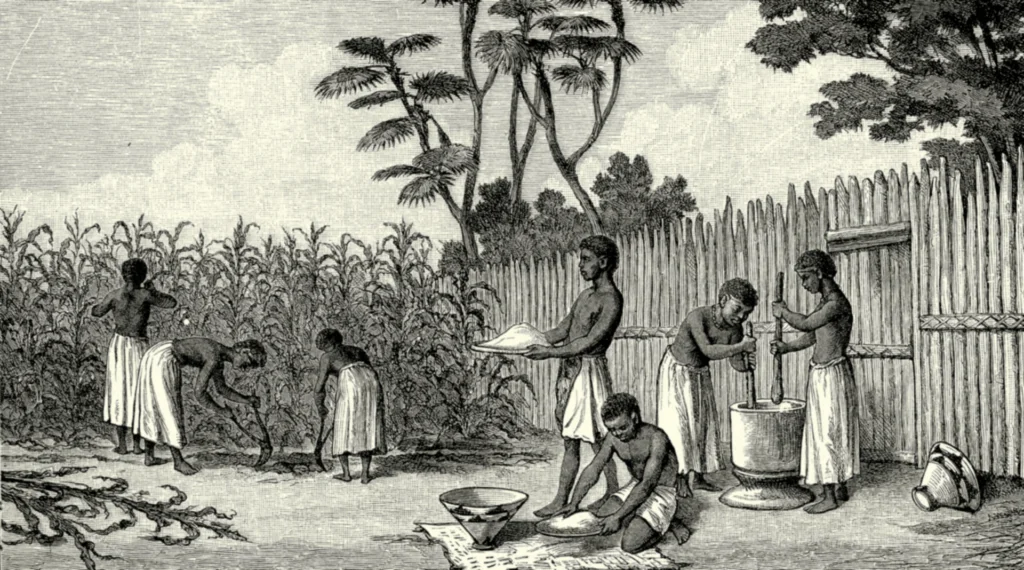
The cuisine of Angola tells the story of this past, showcasing a fusion of flavors and techniques that trace the country’s journey through time.
Indigenous groups like the Ovimbundu and the Kimbundu cultivated staples such as cassava, corn, and beans, creating Angolan food dishes that remain foundational to the Angolan diet.
The Slave Trade
The slave trade left a bittersweet mark, as enslaved Angolans carried their culinary traditions across the Atlantic, influencing the cuisines of Brazil, the Caribbean, and the American South. Meanwhile, Angola absorbed culinary traditions from its diaspora, creating a unique creolization of flavors.
Portuguese Colonialism (1483-1975): Shaping the Culinary Canvas
Angola’s encounter with Portuguese explorers in the late 15th century marked the beginning of a long period of colonial rule. Lasting until 1975, this era profoundly impacted the country’s cuisine by introducing European ingredients, cooking techniques, and culinary traditions. Key contributions from Portuguese cuisine include:
Introduction of Staples
Maize, cassava, and sweet potatoes became staples in Angolan cuisine alongside the traditional African crops.
Influence on Cooking Techniques:
Portuguese methods of grilling, roasting, and stewing influenced the preparation of meats, contributing to the development of unique Angolan dishes.
Blend of Flavors
Fusion of Portuguese spices and seasonings with indigenous ingredients resulted in a diverse range of flavors.
Civil War and External Involvement (1975-2002): A Culinary Landscape in Turmoil

The Angolan Civil War, spanning from 1975 to 2002, significantly disrupted daily life, including the culinary practices of the population.
The power struggle among these groups reflected ethnic tensions. Each movement had its culinary preferences:
- MPLA: Popular among the Mbundu and multiracial Mestiqos.
- FNLA: Advocated for the restoration of the ancient Kongo Kingdom.
- UNITA: Attracted the Ovimbundu ethnic group.
The involvement of external powers, including the USA, Russia, Cuba, and South Africa, further added complexity to the situation. This period impacted the Angolan cuisine in the following ways.
Disruption of Agriculture
Widespread conflict led to the disruption of agricultural activities, affecting the production of staple crops.
Dependency on Relief Aid
The reliance on international aid and relief efforts impacted the availability and diversity of food items.
Influence of External Cultures
The presence of foreign military forces brought influences from the soldiers’ home countries, contributing to a melting pot of culinary influences.
Post-Civil War (2002-Present): Resilience and Rediscovery

Since the end of the civil war in 2002, Angola has been on a journey of recovery and rebuilding. This period has witnessed a resurgence of traditional culinary practices, a renewed focus on agriculture, and an exploration of the rich culinary heritage. Key developments include:
Rediscovery of Indigenous Ingredients
Emphasis on traditional crops and ingredients, such as okra, plantains, and various local greens.
Revival of Culinary Techniques
The rediscovery of pre-colonial cooking methods and techniques has contributed to the revival of authentic Angolan flavors.
Modern Fusion Cuisine
A contemporary culinary scene has emerged, blending traditional Angolan ingredients and techniques with global influences.
Angola’s culinary history is a testament to its resilience and adaptability, with the fusion of indigenous flavors and external influences creating a rich and diverse food culture. The impact of Portuguese colonialism and the civil war has left an indelible mark, shaping the culinary identity of this African nation.
References
- bbc.com
- Angolan civil war 1975-2002 brief history
- Angolan civil war 1975-2002 timeline events
- searchworks.stanford.edu
What impact has the Climate and Geography had on Angolan Cuisine?

The climate and geography of Angola have significantly influenced its cuisine over the years. Let’s explore how these factors have shaped Angolan food traditions:
Angolan Climate Impact
Droughts and Water Scarcity
- Angola experiences severe and frequent climate hazards, including prolonged droughts. The province of Cunene has been particularly affected by droughts.
- These water shortages impact agriculture, food production, and energy generation.
- Hydropower: Angola relies heavily on hydropower for electricity, and water scarcity affects its availability.
Temperature Rise
- Climate models predict that most of Angola will become 1–1.5 degrees Celsius warmer by 2020-2040 relative to the 1981–2010 period.
- Increased temperatures influence crop growth, food preservation, and cooking methods.
Geography Impact

- Abundant Water Resources:
- Angola is rich in natural capital, including abundant water resources.
- These water sources are crucial for agriculture, fisheries, and hydropower.
- Fertile Arable Land:
- The country has fertile arable land suitable for agriculture.
- Farming practices are influenced by soil quality, topography, and regional variations.
- Coastline and Seafood:
- Angola’s long coastline provides access to a variety of seafood.
- Grilled fish, shrimp, crab, and other marine delicacies are part of Angolan cuisine.
- Forests and Wild Foods:
- Forested areas contribute to wild foods, including fruits, nuts, and game.
- Indigenous ingredients play a role in traditional dishes.
- Renewable Energy Potential:
- Angola’s renewable energy potential, such as solar and wind, can impact food processing and cooking methods.
Culinary Adaptations
- Diverse Ingredients:
- The availability of water and fertile land allows for diverse crops like cassava, maize, and vegetables.
- Palm oil, a staple, is extracted from palm trees.
- Staple Dishes:
- Funge: A cassava-based dish, often served with fish or meat.
- Calulu: A flavorful stew with fish or chicken, cooked with tomatoes and palm oil.
- Feijoada: A bean stew with pork or beef, influenced by Portuguese cuisine.
- Food Preservation Techniques:
- Given the warm climate, drying, smoking, and fermentation are used to preserve food.
- Influence of Neighbors:
- Angola’s proximity to other African countries influences culinary exchanges and spice usage.
References
Understanding the Essence of Angolan Food

To understand Angolan food is to delve into a culinary narrative that celebrates community, simplicity, and the riches of the land and sea. Robust flavors, hearty staples, and a harmonious blend of indigenous and Portuguese gastronomies characterize the dishes.
Central to the essence of Angolan cuisine is the concept of ‘comida caseira,’ home cooking that exudes warmth and generosity. The dinner table is a gathering place, where dishes like calulu (a stew of fish, vegetables, and often dried meat) and pirão (a thick sauce made with cassava flour) are shared.
The seasoning palette of Angolan cooking includes garlic, onion, bay leaves, coriander, and the ubiquitous piri-piri, a fiery chili pepper that infuses dishes with heat and heart. Angolans celebrate seafood, with the Atlantic offering up a bounty that graces plates in the form of grilled fish, stews, and the much-loved Caldeira’d (a type of fish stew).
Understanding Angolan cuisine also means recognizing the importance of preservation methods like drying and smoking, which are integral to the flavors of meats and fish. And with the land offering a variety of beans, sweet potatoes, and tropical fruits, the cuisine is a mirror of the country’s diverse agricultural landscape.
The Influence of Angolan Cuisine on African Gastronomy

As I explored the world of Angolan cuisine, I discovered that its impact extends beyond Angola’s borders. Traditional Angolan dishes and ingredients have influenced the culinary landscape of Africa, creating a diverse tapestry of flavors and cooking techniques that showcase the continent’s rich gastronomic heritage.
The fusion of indigenous African flavors with Portuguese influences and local ingredients has resulted in a unique culinary tradition that has left its mark on African cuisine. In neighboring countries like Namibia and Mozambique, dishes like Calulu and Moamba de Galinha have become popular, reflecting the widespread influence of Angolan cuisine.
But it’s not just the dishes themselves that have influenced African gastronomy; it’s also the cooking techniques and cultural significance that have spread throughout the continent. Traditional methods like grilling meats on an open fire and slow-cooking stews in clay pots are found in many African countries and reflect the communal spirit that is at the heart of Angolan cooking.
Angolan cuisine has also been embraced by the African diaspora, with Angolan restaurants and food trucks popping up in major cities worldwide. The flavors of traditional Angolan dishes have found a new audience, showcasing the rich culinary heritage of Angola and its influence on the wider African community.
Overall, the influence of Angolan cuisine on African gastronomy is undeniable, reflecting the diversity and richness of the continent’s food culture. Traditional Angolan dishes and cooking techniques have left a lasting impression on the culinary landscape of Africa and continue to shape the way we think about food today.
A Rich Tapestry of Flavor: Angolan Cuisine Unveiled
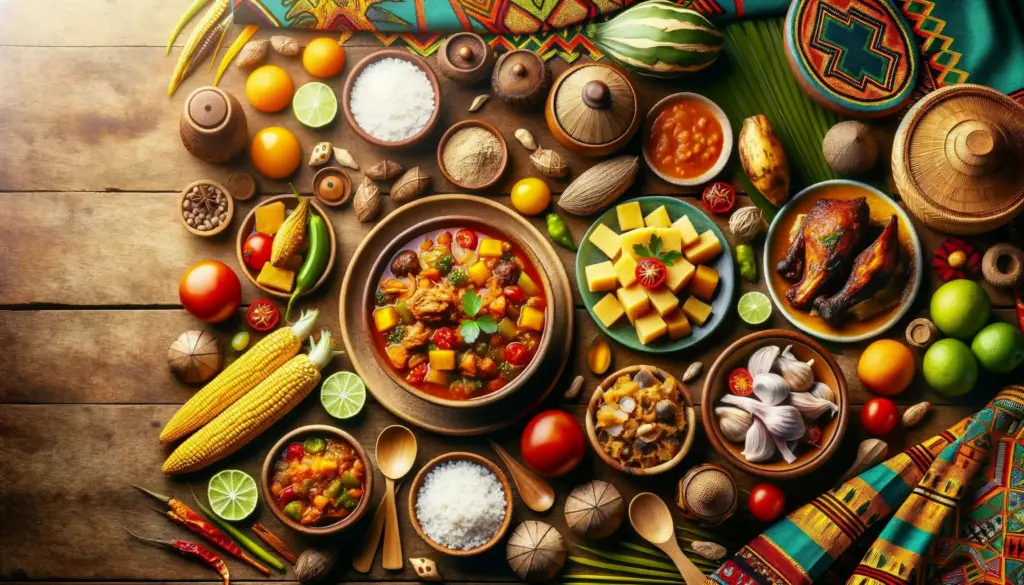
My exploration of Angolan cuisine and recipes has been a fascinating journey into the heart of African gastronomy. The unique blend of indigenous African flavors, Portuguese influences, and local ingredients make traditional Angolan dishes a standout among the continent’s diverse culinary traditions.
Throughout this journey, I’ve discovered the rich tapestry of flavors and cultural significance that make Angolan cuisine a true delight. Whether indulging in must-try dishes such as Moamba de Galinha or Calulu, or experiencing the lively street food scene, every bite showcases the rich history and traditions behind Angolan food culture.
One aspect that stands out is the importance of traditional Angolan spices, such as piri-piri and calabash nutmeg. These spices add depth and flavor to every dish and showcase the country’s unique flavor profiles.
The culinary traditions of Angola are also deeply rooted in communal cooking, where families and friends gather to prepare and share meals. This promotes a sense of togetherness and celebration, making every meal a special occasion.
The influence of Angolan cuisine extends beyond its borders, with neighboring countries and the diaspora embracing its flavors and ingredients. Angolan cuisine has left an indelible mark on African gastronomy, and it’s easy to see why.
Exploring Angolan cuisine and recipes has broadened my culinary horizons and left me craving more of its delicious delights. From traditional dishes to street food and desserts, every bite is a celebration of the vibrant and unique flavors of Angola.
A Taste of Africa: Angolan Cuisine at Its Finest
Overall, Angolan cuisine and recipes offer a true taste of Africa, highlighting the diversity and richness of the continent’s culinary traditions. The unique blend of flavors, ingredients, and cultural significance make it a standout among the vast array of African gastronomy.
Whether you’re a seasoned food lover or a curious beginner, I highly recommend delving into the world of Angolan cuisine. From traditional dishes to street food and desserts, there’s something for everyone to discover and enjoy.
Join me in celebrating the vibrant world of Angolan cuisine and recipes!
Angolan Culinary Traditions
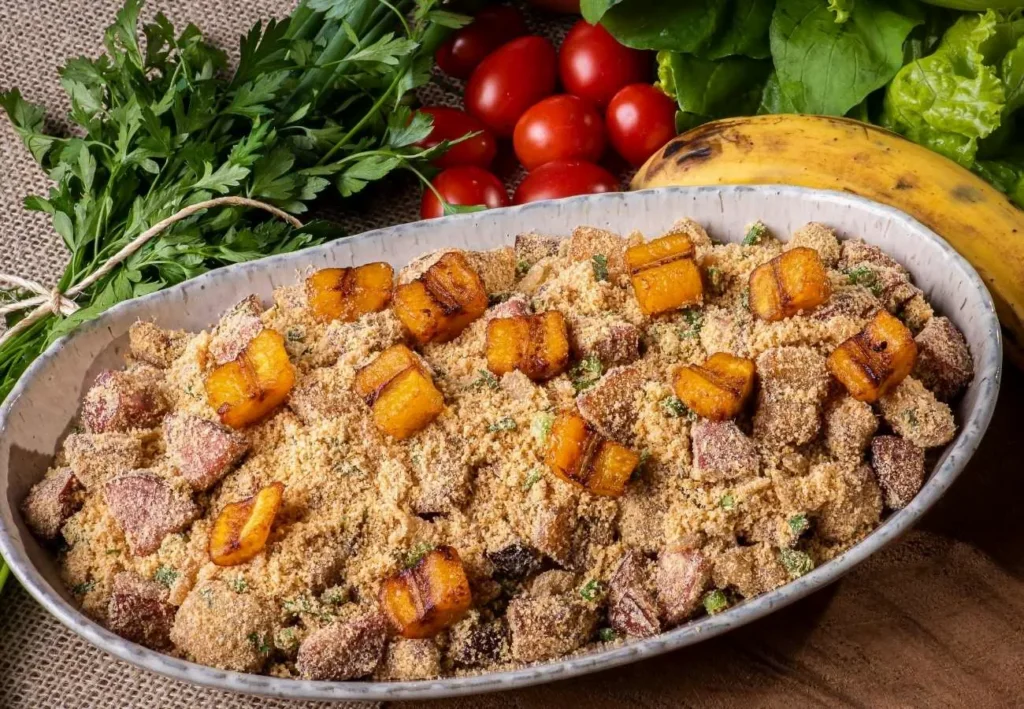
Angolan culinary traditions are a symphony of practices passed down through generations. The preparation of food is a ritualistic endeavor, often involving methods that date back centuries. One such tradition is the making of funge or pirão, staples that require a rhythmic stirring technique to achieve the perfect texture.
Festivals and holidays see the proliferation of traditional dishes, with each celebration boasting its own special Angolan food. Bacalhau (dried and salted cod) completes the Christmas menu. The Portuguese introduced it. They prepare it with a melange of vegetables and often accompanied by palm wine, a local favorite.
Another key tradition is the ‘muamba’, a term that refers to stews made with palm oil, a rich, red oil that is a culinary gold in Angolan cooking. Whether it’s muamba de galinha with chicken or a vegetarian version with okra and squash, the muamba is a dish that epitomizes the soul of Angolan cuisine.
The tradition of using every part of the animal reflects not only an economic sensibility but also a deep respect for the land and its provisions. Chefs use leaves similar to spinach to cook with meat or fish to produce dishes like kizaka. The consumption of offal, prepared with intricate spicing and served as a delicacy.
Exploring Angolan Food Ingredients: The Flavors of Angola

The flavors of Angola are a testament to its rich environmental tapestry, ranging from the fertile coastal plains to the sprawling savannas. The country’s ingredients are a celebration of this biodiversity, with a particular emphasis on both terrestrial and aquatic offerings.
Cassava, a root vegetable, is the cornerstone of many Angolan dishes. In its dried and ground form, it becomes fuba. Chefs use it to make funge, the soft, polenta-like accompaniment to many meals. This versatile crop is also the base for kizaka. They cook its leaves into a nutritious green stew.
Red palm oil stands out as a defining flavor, imparting a nutty and smoky taste to dishes like moamba de galinha. This oil is a culinary signature of Angola, its vivid hue painting each dish with the color of the setting sun.
The Atlantic Ocean blesses Angola with an abundance of seafood, which is a staple along the coast. Fish such as red snapper, grouper, and tilapia are often grilled, stewed, or incorporated into soups. The influence of the Portuguese is seen in the use of salt cod, a reminder of historical links and shared tastes.
Herbs and spices such as bay leaves, cilantro (known locally as coentro), mint, and the hot piri-piri chili infuse Angolan dishes with a complexity that ranges from the soothing to the sensational.
Lastly, fruits such as mango, papaya, and avocado reflect the tropical climate, often eaten fresh or used to create sweet, refreshing desserts and juices, balancing the bold flavors that define Angolan cuisine.
A Gastronomic Adventure: Traditional Angolan Cuisine Cooking Techniques

One of the most fascinating aspects of Angolan cuisine is the use of traditional cooking techniques that have been passed down from generation to generation. These methods contribute to the unique flavor profiles and textures found in traditional Angolan dishes.
One such method is grilling meats on an open fire, which produces a smoky, charred flavor that is characteristic of many Angolan dishes. Another technique is slow-cooking stews in clay pots, which allows for flavors to meld together and intensify over time. These are just a few examples of the many cooking techniques that are integral to Angolan cuisine.
It’s also important to note that communal cooking is a significant part of Angolan culture. Many traditional dishes are prepared and enjoyed by families and communities, with each person contributing to the meal in their own unique way. This sense of shared responsibility and joy in cooking is a key part of the Angolan food experience.
Angolan Food – The Importance of Funge and Pirão
Two staple foods in Angolan cuisine are funge and pirão, both of which are made from cassava flour. Funge has a soft, doughy consistency and is often served as an accompaniment to stews and sauces, while pirão is thicker and has a more porridge-like texture.
These two foods serve as a basis for many traditional Angolan dishes, and their preparation requires a specific technique. The cassava flour is mixed with water and stirred vigorously until it forms a smooth, cohesive ball.
The ball is then divided into smaller pieces and shaped into the desired form, either as individual portions for funge or mixed into a larger pot for pirão.
Overall, traditional Angolan cooking techniques are an integral part of the country’s culinary heritage. From grilling meat to communal cooking, these methods contribute to the unique flavors and textures that make Angolan cuisine so distinctive.
The Role of Women in Angolan Cooking

In Angolan culture, cooking is often considered a woman’s role, and there is a great deal of pride associated with the ability to prepare delicious and nutritious meals for one’s family.
Women are often the keepers of traditional recipes and cooking techniques, passing them down through generations and preserving the cultural heritage of Angolan cuisine.
Angolan Cuisine – Bringing People Together

Whether it’s through ceremonial dishes or daily mealtime, Angolan culinary traditions have a way of bringing people together and fostering a sense of community.
Sharing food and stories around the table is a cherished part of daily life in Angola, and it is this sense of community that makes Angolan cuisine such an important and beloved part of the country’s culture.
With its unique flavors, ingredients, and culinary traditions, Angolan cuisine is truly a remarkable part of African gastronomy that is not to be missed.
Traditional Angolan Spices: A Flavorful Palette

One of the most defining features of Angolan cuisine is its use of traditional spices that give dishes a distinctive flavor. The use of local spices and herbs is a characteristic that defines most traditional Angolan recipes, and is one of the reasons why the cuisine is so unique.
Among the most popular traditional spices used in Angolan dishes are piri-piri, made from African bird’s eye chili peppers, and calabash nutmeg, which is derived from the seeds of the calabash fruit. Both these spices are aromatic with a strong flavor and are used to add a kick to many Angolan dishes.
Another popular Angolan spice is condiment, made from the African locust bean. This spice is used in many stews and soups to give them a thick, slightly sweet taste. Other frequently used spices include garlic, onions, and ginger, which are all used to add depth to dishes.
Some popular Angolan recipes that feature these spices include Muamba de Galinha, a chicken stew made with piri-piri, palm oil, and tomato, and Calulu, a traditional dish made with dried fish, okra, and calabash nutmeg.
If you’re interested in incorporating traditional Angolan spices into your cooking, you can start by experimenting with simple recipes like fish or chicken dishes. These spices can be found in African grocery stores or online retailers, and can be a fun way to explore new flavors and recipes.
Overall, the use of traditional spices is an essential part of Angolan cuisine, and is an excellent way to explore the unique flavors and culinary traditions of this vibrant African country.
The Essence of Angolan Street Food

When it comes to experiencing the local culture and cuisine of Angola, there is no better way than exploring the vibrant street food scene. From savory snacks to sweet treats, there’s something to satisfy every palate.
One of the most popular street foods in Angola is grilled meat, particularly chicken and beef. The meat is cooked on an open flame, resulting in a delicious smoky flavor that is hard to resist. Another must-try street food dish is the ever-popular empada, a savory pastry filled with chicken or shrimp.
| Popular Angolan Street Foods: | Description: |
|---|---|
| Cachupa | A hearty stew made with beans, corn, and meat or fish. |
| Peanut Balls | A sweet treat made with ground peanuts and sugar. |
| Grilled Kwanza River Prawns | Large prawns marinated with garlic, lemon, and olive oil, then grilled to perfection. |
For those with a sweet tooth, Angolan street food offers a variety of delectable options. Cocada, a dessert made with coconut, sugar, and egg yolks, is a popular choice. Another sweet treat is bolacha Maria, a buttery cookie that is often served with coffee.
Exploring the street food scene in Angola is not only a culinary adventure but also a cultural experience. It is a chance to interact with locals, try traditional dishes, and get a glimpse into everyday life in Angola.
Where to Find Traditional Angolan Street Food
While street food can be found all over Angola, Luanda is known for having some of the best spots. The streets around Largo da Independencia and Benfica Market are particularly popular among locals and tourists alike.
- Location: Largo da Independencia, Luanda
- Hours: 11am-8pm
- Price range: Inexpensive
“I loved trying all the different street food in Angola. It really opened my eyes to the unique flavors and ingredients used in Angolan cuisine. I especially enjoyed the empadas and grilled meats.”
Jonathan
Don’t miss out on the opportunity to taste the delicious and authentic flavors of Angolan street food. Whether you are exploring a bustling market or wandering down a quiet side street, there is always a new and exciting dish waiting to be discovered.
Must-Try Angolan Food Dishes
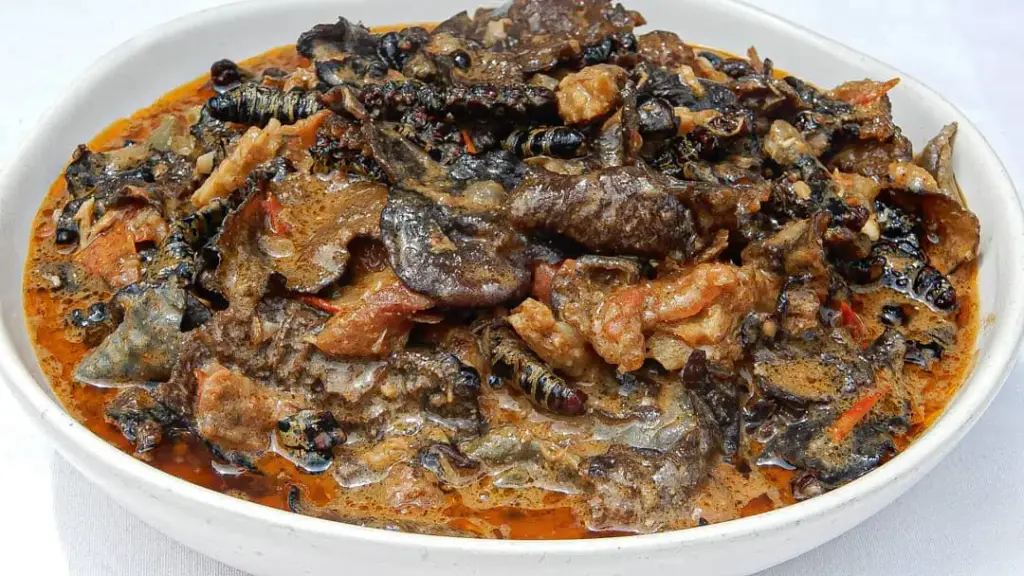
If you’re a food lover, then you’re in for a treat! Angola’s delectable cuisine offers a wide variety of dishes to satisfy every palate. Get ready to embark on a culinary journey and discover the must-try Angolan food dishes that will leave you wanting more.
First on the list is Moamba de Galinha, a delicious chicken stew that is a staple in Angolan households. We make this with onions, tomatoes, okra, and palm oil, this dish is full of flavor. We often serve it with funge, a type of cornmeal porridge.
Another traditional dish that you must try is Calulu, a hearty stew made with dried fish, vegetables, and palm oil. We usually serve this dish over funge or pirão, a type of cornmeal mush.
For seafood lovers, there’s Arroz de Marisco, a savory rice dish made with a variety of seafood such as shrimp, crab, and mussels. We season it with onions, garlic, tomatoes, and bay leaves, giving it a rich and flavorful taste.
And let’s not forget about Muamba de Peixe, a fish stew made with fresh fish, onions, garlic, and peppers. Chefs season it with traditional Angolan spices such as calabash nutmeg and piri-piri, offering a spicy kick to your taste buds.
Lastly, for dessert, try the delicious Cocada, a sweet treat made with coconut and sugar. You can find this at festivals and celebrations and is a favorite among locals and tourists alike.
These are just a few of the must-try Angolan dishes that will leave you craving more. With their unique flavors and cultural significance, they truly showcase the diversity of Angolan cuisine and are a must-try for any food lover.
Angolan Cuisine – Ceremonial Dishes

Special occasions in Angolan culture are often marked by the preparation and sharing of ceremonial dishes. These dishes are typically reserved for important events such as weddings, births, and funerals.
One such dish is Mufete, a traditional Angolan dish that features grilled fish served with cassava flour, palm oil, and vegetables. Another popular ceremonial dish is Fumbwa, a stew made with smoked fish, beans, and leafy greens.
How Healthy is Angolan Food?

Angolan food reflects a rich blend of cultural influences, but its health impact is multifaceted. Let’s explore this in more detail:
Challenges and Context
Food Insecurity
Angola faces significant food insecurity, especially in the southwestern regions. Droughts and climate change exacerbate this issue.
Poverty
Poverty remains a major factor affecting food access and nutrition.
Limited Dietary Diversity
Many Angolans have limited access to diverse foods, leading to potential nutrient deficiencies.
Health Implications
- Undernutrition: Despite progress, undernutrition persists. Malnutrition affects physical and cognitive development, especially among children.
- Micronutrient Deficiencies: Limited dietary variety can result in deficiencies in vitamins (e.g., vitamin A, iron) and minerals.
- Sanitation and Hygiene: Poor sanitation and hygiene contribute to health challenges.
- Gender Inequality: Gender disparities impact food security and nutrition.
Traditional Angolan Dishes
- Funge: Made from cassava flour, it provides energy but lacks essential nutrients.
- Calulu: A flavorful stew with fish or meat, cooked with tomatoes and palm oil. It offers protein and healthy fats.
- Feijoada: A bean stew with pork or beef, influenced by Portuguese cuisine. It provides protein and fiber.
References
- World Food Programme – Angola
- unicef.org
- World Food Program Angola 2021 Annual country report highlights
Exploring Popular Angolan Recipes in Your Own Kitchen
One of the best ways to experience the unique flavors of Angolan cuisine is by trying out some of the most popular Angolan recipes.
Here are some must-try Angolan recipes:
National Dish of Angola – Moamba de Galinha

Angolan food is a delightful blend of African ingredients and cooking techniques with Portuguese influences, owing to the country’s colonial history. The culinary traditions of Angola are a testament to its rich cultural heritage and geographical diversity.
One of the standout dishes in Angolan cuisine is Moamba de Galinha.
Moamba de Galinha (Chicken Moamba): Moamba de Galinha is a traditional dish of Luanda, the capital of Angola. It is essentially a chicken stew prepared with palm oil, cassava flour porridge, okra, plantains, and wild spinach.
The dish is rich, flavorful, and represents the essence of Angolan flavors.
National Dish of Angola – Moamba de Galinha Ingredients
- Chicken pieces
- Palm oil or red palm oil
- Cassava flour (for the porridge)
- Okra (sliced)
- Plantains (sliced)
- Wild spinach (you can substitute with regular spinach)
- Onions (chopped)
- Tomatoes (chopped)
- Garlic (minced)
- Salt and pepper to taste
National Dish of Angola – Moamba de Galinha Recipe
Preparation of Chicken
Season the chicken pieces with salt, pepper, and minced garlic. Let it marinate for at least an hour.
Cooking
In a large pot, heat the palm oil. Add the chopped onions and sauté until translucent. Add the marinated chicken pieces and brown them on all sides.
Adding Vegetables
Once the chicken is browned, add the chopped tomatoes, sliced okra, and plantains to the pot. Stir well and let it cook for a few minutes.
Simmering
Add enough water to cover the chicken and vegetables. Let the stew simmer on low heat until the chicken is cooked through and the vegetables are tender.
Cassava Porridge
In a separate pot, prepare the cassava flour porridge. Slowly add cassava flour to boiling water, stirring continuously to avoid lumps. The consistency should be smooth and thick.
Serving
Once the chicken stew is ready, serve it hot with a side of cassava porridge. You can also add wild spinach as a garnish or mix it into the stew.
Enjoy your Moamba de Galinha, a true taste of Angolan culinary heritage!
Angolan Food – Cachupa
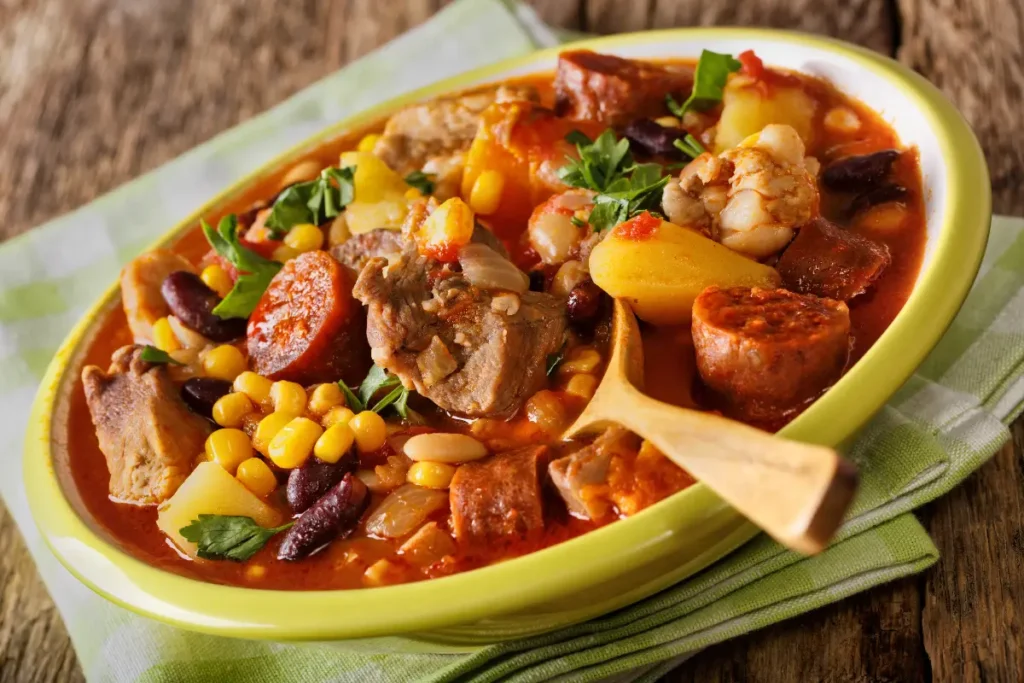
History and Background
“Cachupa” is a staple in Angolan cuisine, embodying the history and cultural richness of the nation. Originating from Cape Verde, Cachupa has become an integral part of Angolan culinary traditions.
This hearty stew reflects the resilience of the Angolan people, as it evolved through historical challenges, including periods of colonization and civil conflict. Cachupa’s adaptability to available ingredients and its comforting nature make it a symbol of community and shared resilience in the face of adversity.
Region of Origin
Cachupa traces its roots to Cape Verde, an archipelago off the coast of West Africa, but has seamlessly integrated into Angolan culinary culture. Angola’s diverse geography, with its coastline, fertile plains, and tropical climate, contributes to the variety of ingredients used in Cachupa. The dish has become a beloved comfort food, enjoyed across the country and often served during communal gatherings and celebrations.
Angolan Food – Ingredients
- 1 cup hominy corn
- 1 cup dried beans (black-eyed peas or kidney beans), soaked overnight
- 1 lb pork sausages, sliced
- 1 lb pork ribs
- 1 lb beef or chicken, cut into chunks
- 2 tablespoons vegetable oil
- 1 onion, finely chopped
- 3 cloves garlic, minced
- 2 tomatoes, diced
- 2 bay leaves
- 1 sweet potato, peeled and diced
- 1 cassava root, peeled and diced
- 1 plantain, peeled and sliced
- 1 cabbage, shredded
- Salt and pepper to taste
- Hot sauce (optional, for serving)
Angolan Food – Recipe
Preparing the Base
- In a large pot, heat vegetable oil over medium heat.
- Add chopped onions and minced garlic, sautéing until golden.
- Stir in diced tomatoes, pork sausages, pork ribs, and beef or chicken chunks. Cook until the meat is browned.
Adding Legumes and Grains
- Add soaked hominy corn and dried beans to the pot.
- Pour enough water to cover the ingredients, and add bay leaves. Bring to a boil, then reduce the heat and simmer until the legumes and grains are tender.
Incorporating Root Vegetables and Plantains
- Add diced sweet potatoes, cassava, plantains, and shredded cabbage to the pot.
- Continue cooking until the root vegetables are tender and the cabbage is wilted.
Seasoning and Finalizing
- Season the Cachupa with salt and pepper to taste.
- Remove the bay leaves.
- Serve Cachupa hot, with optional hot sauce on the side.
Cachupa stands as a symbol of Angolan resilience, offering a warm and comforting experience that unites communities around the shared joy of a delicious meal.
Angolan Food – Caldeira’d

History and Background of Caldeirada: A Hearty Stew from Angola
Caldeirada, a robust and flavorful stew, is a staple in Angolan cuisine with a rich history rooted in the region’s diverse culinary heritage. The name “Caldeirada” itself suggests its Portuguese influence, as it translates to “stew” in Portuguese.
This dish exemplifies the resourcefulness of Angolan cooks, who combined local ingredients with Portuguese cooking techniques. Traditionally enjoyed in gatherings and family meals, Caldeirada has become a symbol of communal dining and the warmth of Angolan hospitality.
Region of Origin: Angola
Caldeirada originates from the heart of Angola, where the fusion of indigenous flavors and Portuguese influences is particularly evident. The coastal areas of Angola contribute to the dish’s emphasis on seafood, while the use of local spices and ingredients reflects the diverse landscapes of the region.
Whether prepared in urban kitchens or rural households, Caldeirada remains a beloved and iconic representation of Angolan culinary tradition.
Ingredients for Caldeirada:
- Seafood:
- 1 lb firm white fish fillets (e.g., cod or hake), cut into chunks
- 1/2 lb large shrimp, peeled and deveined
- 1/2 lb squid, cleaned and sliced into rings
- Base Ingredients:
- 2 tablespoons vegetable oil
- 1 onion, finely chopped
- 2 cloves garlic, minced
- 2 tomatoes, diced
- 1 green bell pepper, sliced
- 1 red bell pepper, sliced
- Broth and Seasonings:
- 2 cups fish or seafood broth
- 1/2 cup white wine
- 1 bay leaf
- 1 teaspoon paprika
- Salt and pepper to taste
- Additional Ingredients:
- 1/2 cup fresh cilantro, chopped (for garnish)
- Lemon wedges (for serving)
Recipe for Caldeirada:
Preparation (Serves 4-6):
Estimated Cooking Time: 40-50 minutes
Calories (per serving): Approximately 300 calories
Ingredients Preparation:
- Prepare Seafood:
- Cut fish fillets into chunks.
- Peel and devein shrimp.
- Clean and slice squid into rings.
- Chop Vegetables:
- Finely chop the onion.
- Mince garlic.
- Dice tomatoes.
- Slice green and red bell peppers.
Cooking Process:
1. Sautéing the Base:
- Step 1: In a large pot, heat vegetable oil over medium heat.
- Step 2: Sauté chopped onions and minced garlic until softened.
- Step 3: Add diced tomatoes, green and red bell peppers, cooking until vegetables are tender.
2. Building the Stew:
- Step 4: Add fish fillets, shrimp, and squid to the pot.
- Step 5: Pour in fish or seafood broth and white wine.
- Step 6: Season with bay leaf, paprika, salt, and pepper.
3. Simmering and Serving:
- Step 7: Simmer the stew for 20-30 minutes, allowing flavors to meld.
- Step 8: Adjust seasoning if necessary.
- Step 9: Garnish with fresh cilantro before serving.
- Step 10: Serve Caldeirada hot, accompanied by lemon wedges.
Experience the heartiness of Caldeirada, a soulful Angolan stew that brings together the bounty of the sea and the warmth of community in every flavorful bite.
Angolan Food – Bacalhau

History and Background of Bacalhau: A Portuguese-Inspired Culinary Tradition in Angola
Bacalhau, a dish with Portuguese roots, has become a beloved part of Angolan cuisine, highlighting the historical ties between Angola and Portugal. Bacalhau, which means salted codfish, has its origins in the Portuguese maritime exploration.
Introduced to Angola through trade and colonization, Bacalhau has evolved into a cherished dish that represents the fusion of Portuguese culinary techniques with local flavors. Today, Bacalhau stands as a testament to the enduring influence of Portuguese gastronomy in Angola.
Region of Origin: Angola
Bacalhau holds a special place in the coastal regions of Angola, where access to fresh seafood has historically been abundant. The dish is a perfect example of culinary adaptation, with Angolan cooks incorporating local ingredients and spices to create a unique version of the Portuguese classic.
Bacalhau is often enjoyed during festive occasions, symbolizing the intersection of cultural heritage and the celebration of shared meals in Angolan communities.
Angolan Food – Ingredients for Bacalhau:
- Main Ingredients:
- 1 lb salted codfish (Bacalhau), soaked and flaked
- 4 large potatoes, peeled and sliced
- 2 onions, thinly sliced
- 3 cloves garlic, minced
- 1/2 cup olive oil
- Vegetables and Herbs:
- 2 red bell peppers, sliced
- 1 green bell pepper, sliced
- 1 cup cherry tomatoes, halved
- 1/2 cup black olives, pitted
- 2 tablespoons fresh parsley, chopped
- Seasonings:
- 1 teaspoon paprika
- Salt and pepper to taste
Angolan Food – Recipe for Bacalhau:
Preparation (Serves 4-6):
Estimated Cooking Time: 1 hour
Calories (per serving): Approximately 400 calories
Ingredients Preparation:
- Prepare Bacalhau:
- Soak the salted codfish in cold water for at least 24 hours, changing the water several times. Once soaked, flake the codfish.
- Slice Vegetables:
- Peel and slice potatoes.
- Thinly slice onions.
- Slice red and green bell peppers.
- Halve cherry tomatoes.
- Chop fresh parsley.
Cooking Process:
1. Sautéing the Base:
- Step 1: In a large skillet, heat olive oil over medium heat.
- Step 2: Sauté sliced onions and minced garlic until softened.
2. Layering the Dish:
- Step 3: Arrange sliced potatoes at the bottom of the skillet.
- Step 4: Layer flaked Bacalhau on top of the potatoes.
- Step 5: Add sliced bell peppers, cherry tomatoes, and black olives.
3. Seasoning and Cooking:
- Step 6: Sprinkle paprika, salt, and pepper over the layers.
- Step 7: Cover the skillet and simmer on low heat for 30-40 minutes, allowing flavors to meld and potatoes to cook.
4. Finishing Touches:
- Step 8: Garnish with chopped fresh parsley.
- Step 9: Serve Bacalhau hot, directly from the skillet.
Experience the flavorful harmony of Bacalhau, a dish that bridges the culinary traditions of Portugal and Angola, inviting you to savor the rich history and diverse influences that have shaped this iconic dish.
Angolan Food – Cachupa

History and Background of Cachupa: A Taste of Angola
Cachupa, a traditional dish hailing from Angola, reflects the rich culinary tapestry of the region. Angola, located on the southwestern coast of Africa, has a diverse cultural heritage shaped by indigenous communities and Portuguese colonization. Cachupa, a hearty stew, emerged as a staple in Angolan cuisine, showcasing the fusion of local ingredients and culinary techniques. The dish has evolved over time, adapting to the availability of ingredients and the preferences of Angolan households.
Region of Origin: Angola
Angola’s varied landscapes, ranging from the lush coastal areas to the inland plateaus, influence the ingredients used in Cachupa. The dish often features a mix of fresh seafood, locally grown vegetables, and hearty grains. The preparation of Cachupa is a communal affair, bringing people together to celebrate the flavors and history embedded in each comforting bowl.
Angolan Food – Ingredients for Cachupa
Main Ingredients:
- 2 cups of hominy corn
- 1 lb dried black-eyed peas
- 1 lb smoked sausage, sliced
- 1 lb pork belly, diced
- 1 lb salted pork ribs
- 1 lb fresh fish fillets
- 1 cup vegetable oil
- 2 large onions, chopped
- 4 cloves garlic, minced
- 4 tomatoes, diced
- 2 bell peppers, chopped
- 4 cups chopped kale or collard greens
- Salt and pepper to taste
Spices and Seasonings:
- 2 bay leaves
- 1 tablespoon paprika
- 1 teaspoon cayenne pepper
- 1 teaspoon thyme
- 1 teaspoon cumin
- Fresh parsley for garnish
Angolan Food – Recipe for Cachupa
Preparation (Serves 6-8):
Estimated Cooking Time: 3 hours
Calories (per serving): Approximately 500 calories
Ingredients Preparation:
- Soak hominy and black-eyed peas: Rinse and soak hominy and black-eyed peas overnight in separate bowls.
- Cook hominy and peas: In separate pots, cook the hominy and black-eyed peas until tender. Drain and set aside.
- Prepare meats: In a large pot, brown the sausage, pork belly, and ribs over medium heat. Remove excess fat.
- Sauté vegetables: In the same pot, sauté onions, garlic, tomatoes, and bell peppers until softened.
Cooking Process:
- Combine ingredients: Add cooked hominy, black-eyed peas, and fresh fish fillets to the pot. Mix well.
- Season the stew: Add bay leaves, paprika, cayenne pepper, thyme, cumin, salt, and pepper. Stir to incorporate flavors.
- Simmer: Cover the pot and let the stew simmer on low heat for 2 hours, allowing the flavors to meld.
- Add greens: Stir in chopped kale or collard greens, and continue simmering until greens are tender.
- Garnish and serve: Sprinkle fresh parsley on top before serving. Cachupa is traditionally served hot and enjoyed with crusty bread.
Delight in the flavors of Angola with this Cachupa recipe, a dish that not only satisfies the palate but also offers a glimpse into the rich cultural heritage of the region.
Angolan Food – Calulu
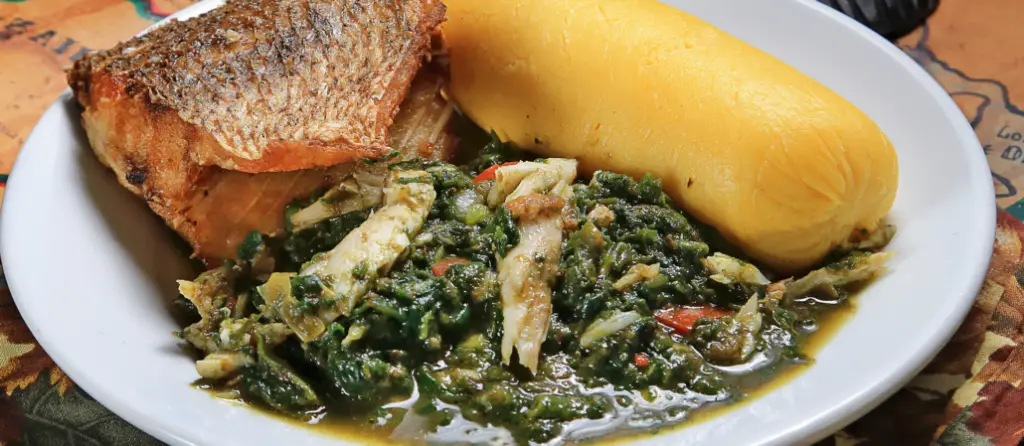
Angolan cuisine is a delightful fusion of indigenous African ingredients and cooking techniques with Portuguese influences, a legacy of its colonial past. The culinary traditions of Angola are deeply rooted in its rich cultural heritage and geographical diversity.
Among the many dishes that stand out in Angolan cuisine, Calulu holds a special place.
Calulu: Calulu is a traditional Angolan dish made with dried fish and vegetables. It is a flavorful stew that combines various ingredients, including onions, tomatoes, okra, sweet potatoes, garlic, and gimboa leaves (similar to spinach).
The dish is often served with rice, funge (a cassava-based side dish), palm oil beans, and farofa (toasted cassava flour).
Angolan Food – Calulu Ingredients
- Dried fish (can be substituted with fresh fish or meat)
- Onions (chopped)
- Tomatoes (chopped)
- Okra (sliced)
- Sweet potatoes (cubed)
- Garlic (minced)
- Palm oil
- Gimboa leaves (or spinach as a substitute)
- Salt and pepper to taste
Angolan Food – Calulu Recipe
Preparation
- Begin by soaking the dried fish in water for a few hours to rehydrate it.
- Once rehydrated, clean and cut the fish into desired pieces.
Cooking
- In a large pot, heat the palm oil.
- Add the chopped onions and garlic and sauté until they become translucent.
Adding Vegetables:
- Add the chopped tomatoes, okra, and sweet potatoes to the pot.
- Stir well and let it cook for a few minutes.
Fish and Seasoning:
- Add the rehydrated dried fish to the pot.
- Season with salt and pepper.
- Mix well and ensure that the fish is well-coated with the other ingredients.
Simmering
- Add enough water to cover the ingredients.
- Let the stew simmer on low heat until the fish is cooked through and the vegetables are tender.
Final Touch:
- Towards the end of the cooking process, add the gimboa leaves (or spinach) and let them wilt in the stew.
Serving
- Once cooked, serve the Calulu hot with a side of rice, funge, or farofa.
Calulu is a hearty and flavorful dish that captures the essence of Angolan culinary traditions. Enjoy your meal!
Angolan Food – Arroz de Marisco

Angolan food is a delightful fusion of indigenous African ingredients and cooking techniques with Portuguese influences, a legacy of its colonial past. The culinary traditions of Angola are deeply rooted in its rich cultural heritage and geographical diversity.
Among the many dishes that stand out in Angolan cuisine, Arroz de Marisco is a popular choice.
Arroz de Marisco (Seafood Rice): Arroz de Marisco is a flavorful dish that translates to “seafood rice.” It is a delightful combination of various seafood, including prawns, squid, white fish, or lobster, cooked with white rice.
The dish is reminiscent of the Portuguese influence on Angolan cuisine and is a testament to Angola’s coastal location, which provides an abundance of fresh seafood.
Angolan Food – Arroz de Marisco Ingredients
- White rice
- Prawns
- Squid (sliced)
- White fish (cut into chunks)
- Lobster (optional)
- Onions (chopped)
- Tomatoes (chopped)
- Garlic (minced)
- Olive oil or palm oil
- Salt and pepper to taste
- Fresh parsley (chopped, for garnish)
Angolan Cuisine – Arroz de Marisco Recipe
- Preparation: Begin by cleaning and preparing the seafood. Devein the prawns, clean the squid, and cut the white fish into chunks.
- Cooking the Rice: In a pot, boil the rice with salt until it’s almost cooked. Drain the excess water and set aside.
- Sautéing the Ingredients: In a large pan or pot, heat the oil. Add the chopped onions and garlic and sauté until they become translucent.
- Adding Seafood: Add the prawns, squid, and white fish to the pan. Cook until the seafood starts to turn opaque.
- Combining Rice and Seafood: Add the partially cooked rice to the pan with the seafood. Mix well, ensuring that the rice is well-coated with the flavors of the seafood.
- Final Cooking: Add the chopped tomatoes and enough water to cover the rice and seafood mixture. Season with salt and pepper. Cover the pan and let it simmer on low heat until the rice is fully cooked and the seafood is tender.
- Garnish and Serve: Once cooked, garnish the Arroz de Marisco with chopped fresh parsley. Serve hot.
Arroz de Marisco is a flavorful and hearty dish that captures the essence of Angolan coastal cuisine. Enjoy your meal!
Angolan Cuisine – Bombo Com Ginguba
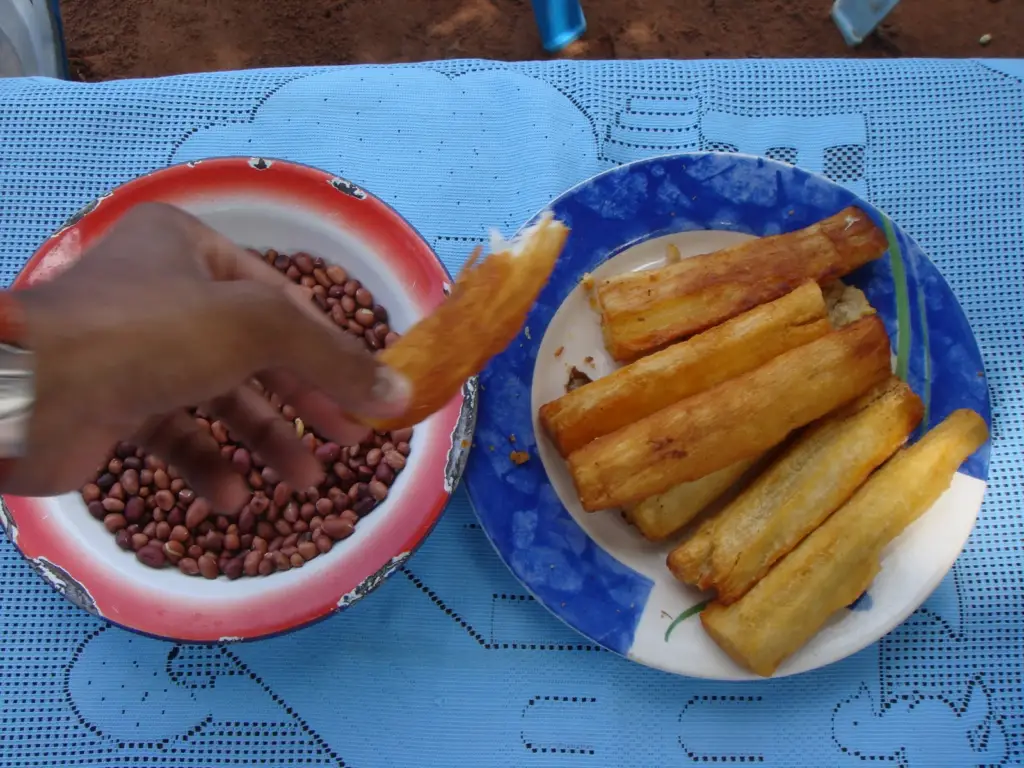
Bombo Com Ginguba Background
Bombo Com Ginguba is a traditional Angolan snack made with cassava flour and peanut butter. It is also known as Bombó de Mandioca or Bombó de Farinha de Mandioca.
It is a simple and nutritious dish that can be eaten as a breakfast, a snack, or a dessert.
Bombo Com Ginguba Ingredients
To make Bombo Com Ginguba, you will need the following ingredients:
- 2 cups of cassava flour
- 1/4 cup of sugar
- 1/4 teaspoon of salt
- 1/4 cup of water
- 1/2 cup of peanut butter
- Oil for frying
Bombo Com Ginguba Recipe
The steps to prepare Bombo Com Ginguba are as follows:
- In a large bowl, mix the cassava flour, sugar, and salt.
- Add water gradually and knead the mixture until it forms a smooth dough. You may need to add more or less water depending on the consistency of the dough.
- Divide the dough into equal portions and shape them into balls.
- Flatten each ball and place a teaspoon of peanut butter in the center. Fold the edges over the peanut butter and seal them well. Repeat with the remaining dough and peanut butter.
- Heat oil in a deep-frying pan over medium-high heat. Fry the bombo com ginguba in batches until golden and crisp, turning once. Drain on paper towels and serve hot or cold.
Enjoy your Bombo Com Ginguba!
Angolan Food – Muamba de Peixe

Angolan cuisine is a delightful fusion of indigenous African ingredients and cooking techniques with Portuguese influences, a legacy of its colonial past. The culinary traditions of Angola are deeply rooted in its rich cultural heritage and geographical diversity.
Among the many dishes that stand out in Angolan cuisine, Muamba de Peixe is a notable seafood dish.
Muamba de Peixe (Fish Muamba): Muamba de Peixe is a traditional Angolan fish stew. While the specific recipe for Muamba de Peixe was not detailed in the provided content, based on the general characteristics of Angolan cuisine and similar dishes, I can provide a probable recipe.
Angolan Food – Muamba de Peixe Ingredients
- Fresh fish (preferably a white fish like tilapia or grouper)
- Palm oil or red palm oil
- Onions (chopped)
- Tomatoes (chopped)
- Garlic (minced)
- Okra (sliced)
- Sweet potatoes (cubed)
- Hot peppers or chili (optional, for added spice)
- Salt and pepper to taste
- Fresh parsley or coriander (chopped, for garnish)
Angolan Cuisine – Muamba de Peixe Recipe
- Preparation: Clean and cut the fish into desired pieces. Season with salt, pepper, and a bit of minced garlic.
- Cooking: In a large pot, heat the palm oil. Add the chopped onions and garlic and sauté until they become translucent.
- Adding Vegetables: Add the chopped tomatoes, okra, and sweet potatoes to the pot. Stir well and let it cook for a few minutes.
- Fish: Add the fish pieces to the pot. If you’re using hot peppers or chili, add them now.
- Simmering: Add enough water to cover the ingredients. Let the stew simmer on low heat until the fish is cooked through and the vegetables are tender.
- Final Touch: Adjust the seasoning if necessary. Once cooked, garnish the Muamba de Peixe with chopped fresh parsley or coriander.
- Serving: Serve the stew hot with a side of rice or funge (a traditional Angolan side dish made from cassava or corn flour).
Muamba de Peixe is a hearty and flavorful dish that captures the essence of Angolan coastal cuisine. Enjoy your meal!
Lastly, for dessert, try the delicious Cocada, a sweet treat made with coconut and sugar. It’s often served at festivals and celebrations and is a favorite among locals and tourists alike.
Angolan Food – Funge de bombo recipe

Angolan Food – funge de bombo recipe
Funge is a staple in Angolan cuisine, It is a starchy side dish that reflects the country’s diverse culinary influences. Originating from the Mbundu people, it has become a ubiquitous accompaniment to various Angolan dishes.
Funge is often served with flavorful stews, grilled meats, or fish.
Angolan Food – funge de bombo recipe Ingredients
Funge:
- Cassava flour (also known as manioc or tapioca flour)
- Water
- Salt (optional)
Serving (Optional):
- Fish stew
- Meat stew (beef, chicken, or goat)
- Grilled fish or meat
- Vegetables
Angolan Food – funge de bombo Recipe:
Prepare the Cassava Dough
- In a large bowl, combine cassava flour with water. The ratio is typically 1:1, but adjustments may be needed based on the cassava flour type.
- Stir continuously to avoid lumps.
Cook the Funge
- Pour the cassava mixture into a pot of boiling water, stirring continuously to prevent clumping.
- Reduce the heat to medium-low and keep stirring.
- Cook until the mixture thickens and forms a smooth, elastic dough. This process usually takes about 15-20 minutes.
Shape the Funge
- Wet your hands with water to prevent sticking.
- Take a portion of the dough and shape it into a smooth, round ball or an oval shape, depending on your preference.
Serving Instructions
- Funge is traditionally served as a side dish.
- It pairs exceptionally well with various stews, such as fish stew, meat stew, or grilled fish/meat.
- It can also be served with vegetables.
Eating Etiquette
- In many Angolan households, funge is commonly eaten with the hands. Break off a small piece, roll it into a ball, and use it to scoop up the accompanying stew or sauce.
Tips
- Cassava flour can vary in texture and consistency. Adjust the water content accordingly to achieve the desired thickness.
- Seasoning the water with salt is optional and can be adjusted to taste.
Note
- While this recipe provides a general guideline for making funge, there may be regional variations in Angola. Additionally, the choice of accompaniments can vary based on personal preferences and local culinary traditions.
Angolan Food – Funge de Calulu
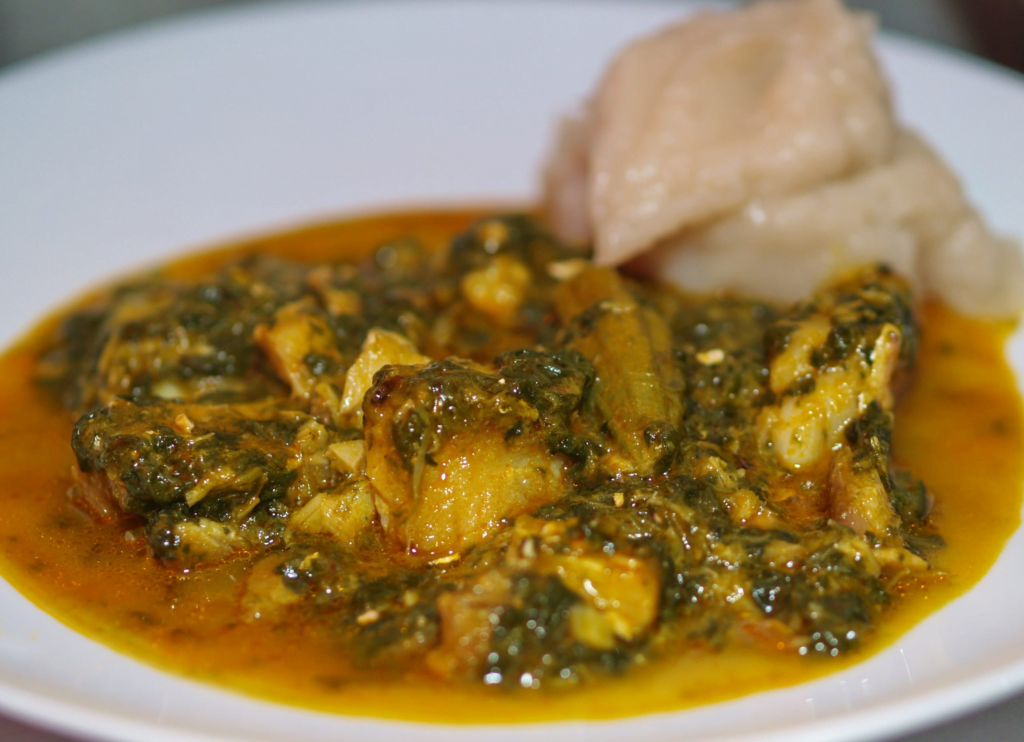
Funge de Calulu Recipe
Ingredients:
For Funge:
- 2 cups cassava flour or cornmeal (funge can be made with either)
- 4 cups water
- Salt to taste
Calulu Stew:
- 500g fish (tilapia or catfish), cleaned and cut into pieces
- 1 onion, finely chopped
- 2 tomatoes, diced
- 2 cloves garlic, minced
- 1 cup okra, sliced
- 1 cup leafy greens (collard greens or spinach), chopped
- 1 cup palm oil
- 1-2 teaspoons ground dried shrimp or fish powder (optional, for extra flavor)
- Salt and pepper to taste
Instructions:
Funge:
- In a saucepan, bring water to a boil.
- Gradually add cassava flour or cornmeal to the boiling water, stirring continuously to avoid lumps.
- Continue stirring until the mixture thickens and forms a smooth, elastic dough.
- Reduce the heat to low, cover the pot, and let it simmer for about 15-20 minutes, stirring occasionally.
- Once the funge is cooked and has a firm, smooth consistency, remove it from heat.
Calulu Stew:
- In a large pot, heat palm oil over medium heat.
- Add chopped onions and minced garlic. Sauté until the onions are translucent.
- Add diced tomatoes and cook until they soften.
- Place the fish pieces in the pot and cook until they start to brown.
- Add sliced okra and cook for a few more minutes.
- Pour in enough water to cover the ingredients, and bring the stew to a simmer.
- Season with salt, pepper, and ground dried shrimp or fish powder (if using). Adjust the seasoning according to taste.
- Stir in the chopped leafy greens and let the stew simmer until the fish is cooked through and the flavors meld together.
- Serve the Calulu stew over portions of funge.
This is a basic recipe, and variations can include additional ingredients such as yams, eggplant, or other locally available vegetables. The funge serves as a perfect accompaniment to soak up the flavorful Calulu stew. Adjust the quantities based on your preferences and the number of servings needed.
Angolan Cuisine – Pirão

Among the many staple dishes in Angolan cuisine, Pirão stands out as a popular side dish that complements various main courses.
Pirão: Pirão is a traditional Angolan dish similar to polenta. It is made from cornflour and is yellow in color. Pirão is often consumed alongside fish, pork, chicken, or beans. It serves as a base that absorbs the flavors of the accompanying dishes, making it a versatile side dish in Angolan meals.
Angolan Cuisine – pirão Ingredients
- Cornflower
- Water
- Salt (to taste)
Angolan Cuisine – pirão Recipe
- Boiling Water: In a large pot, bring water to a boil. Add a pinch of salt.
- Adding Flour: Gradually add the cornflower to the boiling water, stirring continuously to prevent lumps from forming.
- Stirring: Continue stirring the mixture vigorously. As the pirão starts to thicken, reduce the heat to low.
- Cooking: Cook the pirão on low heat, stirring regularly, until it becomes smooth and pulls away from the sides of the pot. This can take anywhere from 15 to 30 minutes, depending on the desired consistency.
Serving
Once cooked, transfer the pirão to a serving dish. It can be shaped into various forms using a wet spoon or hands. Serve hot with your choice of stew, sauce, or meat.
Pirão is a simple yet essential part of Angolan cuisine, providing a filling base for many flavorful dishes. Whether paired with fish, pork, chicken, or beans, pirão absorbs the flavors of the accompanying dishes, making every bite a delightful experience.
Would you like more information or recipes from Angolan cuisine?
Angolan Cuisine – Kizaca

History and Background
“Kizaca” is a traditional Angolan dish that reflects the nation’s rich culinary tapestry. Rooted in the history of Angola, Kizaca showcases the fusion of indigenous ingredients and the influences of Portuguese colonization.
This hearty dish often features a combination of protein, vegetables, and aromatic spices, highlighting the diverse flavors inherent to Angolan cuisine. As with many Angolan recipes, Kizaca serves as a flavorful testament to the country’s cultural heritage and the resilience of its people.
Region of Origin
Originating from Angola, Kizaca is deeply embedded in the country’s culinary traditions. Angola’s geographical diversity, with its coastline, fertile interior, and abundant natural resources, contributes to the variety of ingredients found in its dishes.
Kizaca, much like other Angolan recipes, captures the essence of the nation’s food culture, combining local produce, traditional cooking techniques, and the impact of Portuguese flavors.
Angolan Cuisine – Ingredients
- 1 lb chicken, cut into pieces
- 1 lb pork ribs
- 1 cup dried shrimp, soaked
- 2 cups cassava leaves, finely chopped
- 1 onion, finely chopped
- 3 cloves garlic, minced
- 2 tomatoes, diced
- 2 tablespoons palm oil
- 1 tablespoon ground peanuts
- 1 tablespoon ground crayfish
- 1 tablespoon chili powder (adjust to taste)
- Salt and pepper to taste
- Cooked rice (for serving)
Angolan Cuisine – Recipe
Preparing the Meat
- In a large pot, heat palm oil over medium heat.
- Add chopped onions and minced garlic, sautéing until golden.
- Stir in diced tomatoes, ground peanuts, ground crayfish, and chili powder. Cook until the mixture thickens.
Cooking the Main Dish
- Add chicken pieces, pork ribs, and soaked dried shrimp to the pot.
- Season with salt and pepper. Stir well to coat the meat with the flavorful mixture.
- Cover and let the meat simmer until cooked through, allowing the flavors to meld.
Adding Cassava Leaves
- Incorporate finely chopped cassava leaves into the pot, ensuring they are evenly distributed.
- Continue cooking until the cassava leaves are tender and the entire dish reaches a harmonious consistency.
Serving
- Serve Kizaca over cooked rice.
- Enjoy this robust and savory Angolan dish that encapsulates the diverse and vibrant flavors of the region.
Kizaca stands as a culinary masterpiece, offering a taste of Angola’s history and traditions with every delicious bite.
Angolan Cuisine – Ceremonial Dishes
Special occasions in Angolan culture are often marked by the preparation and sharing of ceremonial dishes. These dishes are typically reserved for important events such as weddings, births, and funerals.
One such dish is Mufete, a traditional Angolan dish that features grilled fish served with cassava flour, palm oil, and vegetables. Another popular ceremonial dish is Fumbwa, a stew made with smoked fish, beans, and leafy greens.
Angolan Ceremonial Dishes – Mufete Angola

Among the many staple dishes in Angolan cuisine, Mufete stands out as a popular dish that is deeply rooted in the culinary traditions of the country.
Mufete Angola: Mufete is a traditional Angolan dish that primarily consists of grilled fish, often river tilapia. The fish is seasoned and grilled to perfection and is then served in a rich sauce made of onion, vinegar, and various spices. The dish is often accompanied by other ingredients such as palm oil beans, cooked manioc (cassava), rice, sweet potato, or farofa.
Angolan Cuisine – Mufete Ingredients
- Fresh river tilapia (or any other preferred fish)
- Onions, finely chopped
- Vinegar
- Various spices (as per preference)
- Palm oil beans (optional)
- Cooked manioc (cassava) or rice or sweet potato
- Farofa (toasted manioc flour)
Angolan Cuisine – Mufete Recipe
- Preparing the Fish: Clean and gut the tilapia. Season it with salt, pepper, and any other preferred spices.
- Grilling the Fish: Grill the fish until it’s cooked through and has a nice char on the outside.
- Preparing the Sauce: In a pan, sauté the chopped onions until they’re translucent. Add vinegar and the spices of your choice. Let the sauce simmer for a few minutes until it thickens slightly.
- Serving: Place the grilled fish on a plate and pour the sauce over it. Serve with your choice of side – be it cooked manioc, rice, sweet potato, or farofa. Optionally, you can also serve it with palm oil beans.
Mufete is a flavorful dish that captures the essence of Angolan cuisine. The combination of grilled fish with the tangy sauce offers a unique taste experience that is both hearty and satisfying.
Angolan Cuisine – Jimboa

History and Background
“Jimboa” is a traditional dish from Angolan cuisine, reflecting the country’s diverse culinary heritage. Rooted in the flavors of Angola, Jimboa embodies the fusion of indigenous ingredients and Portuguese influences. As a coastal nation, Angolan cuisine often features an abundance of seafood, while aromatic spices and tropical produce contribute to its unique character. Jimboa, with its rich history and regional variations, serves as a delicious testament to Angola’s cultural tapestry.
Region of Origin
Jimboa originates from Angola, a country located on the southwestern coast of Africa. Angola’s culinary landscape is influenced by its history, with Portuguese colonization leaving an indelible mark on the cuisine. Coastal areas heavily rely on seafood, while the interior regions showcase a diverse array of flavors, often highlighting staples like cassava, yams, and various meats. Jimboa, with its blend of local ingredients and Portuguese culinary techniques, represents the culinary diversity that defines Angolan gastronomy.
Ingredients
- 1 lb shrimp, peeled and deveined
- 1 lb white fish fillets, cut into chunks
- 1 cup okra, sliced
- 1 cup tomatoes, diced
- 1 onion, finely chopped
- 2 cloves garlic, minced
- 1 red bell pepper, chopped
- 1 green bell pepper, chopped
- 1 cup palm oil
- 2 tablespoons tomato paste
- 1 tablespoon ground crayfish
- 1 tablespoon chili powder (adjust to taste)
- Salt and pepper to taste
- Fresh cilantro, chopped (for garnish)
- Cooked rice (for serving)
Recipe
Preparing the Seafood
- In a large pot, heat palm oil over medium heat.
- Add chopped onions and minced garlic, sautéing until golden.
- Stir in diced tomatoes, tomato paste, and ground crayfish. Cook until the mixture thickens.
Cooking the Main Dish
- Add shrimp, fish chunks, sliced okra, chopped red and green bell peppers to the pot.
- Season with chili powder, salt, and pepper. Stir well to combine.
- Cover and let the Jimboa simmer until the seafood is cooked through and the flavors meld.
Serving
- Serve Jimboa over cooked rice.
- Garnish with fresh cilantro.
- Enjoy this flavorful Angolan delight that captures the essence of the nation’s culinary heritage.
Jimboa offers a taste of Angola’s rich and diverse flavors, making it a must-try for those seeking a culinary adventure through Angolan cuisine.
Angolan Cuisine – Fumbwa
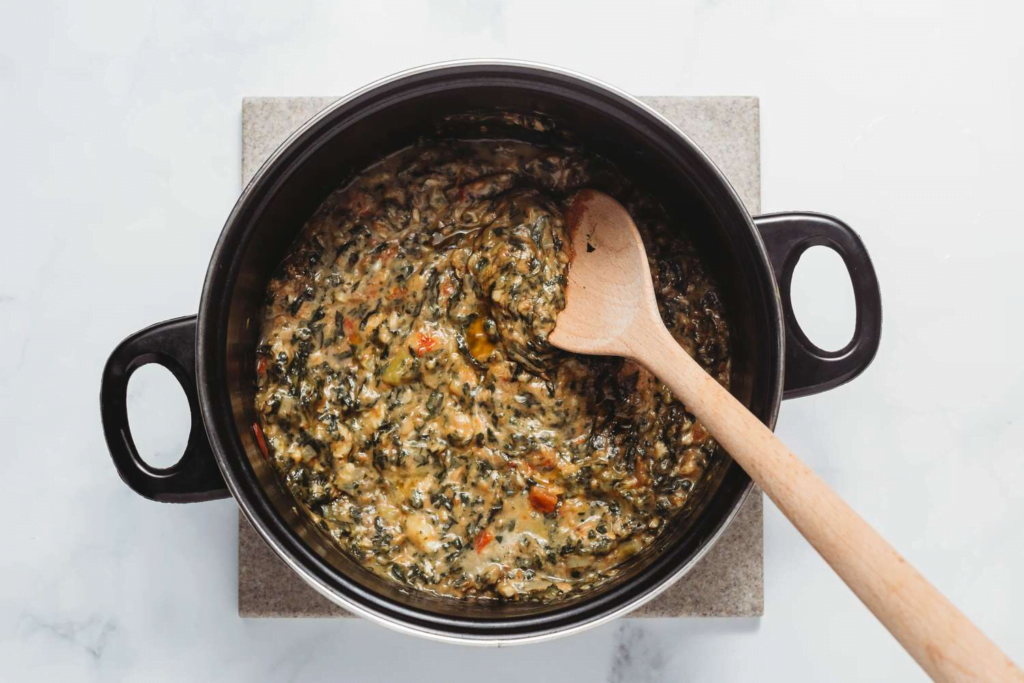
The cuisine is characterized by its use of diverse ingredients, ranging from seafood to game meat, and is accompanied by a variety of side dishes made from grains, vegetables, and legumes.
Angolan Cuisine – Fumbwa Ingredients
- 2 kilos fumbwa (you can substitute with any other green veggie such as collards kale, cassava leaves, turnip greens, or spinach.
- ½ cup peanut butter or 1 cup peanuts
- 2 to tomatoes
- 1 medium onion
- 2 tablespoons red palm oil
- 4 ounces dried or smoked fish
- Water
Fumbwa Instructions
- Clean the veggie, remove hard stems, and shred finely.
- If using peanut seeds, ground them into a fine paste.
- Chop/crush the tomatoes and dice the onions.
- Debone the smoked fish and soak in water for a few minutes, and rinse.
- Parboil the fumbwa in an uncovered pot with a lot of water until it becomes tender.
- Place a pan over medium heat, put the parboiled veggies to it, and add 1 cup of the parboiled water.
- Add the sliced onions, tomatoes, and smoked fish to the pot and mix well.
- In a bowl, mix the peanut butter or ground peanut paste with 1 cup of the parboiled water and make a smooth
- paste.
- Stir in the mixture to the veggies and add the red palm oil. Stir thoroughly, cover, and cook on medium heat for 7 minutes.
- Enjoy with baton de manioc, fufu, yam, rice, or sweet potatoes.
Angolan Food – Ginguba Torrada

History and Background of Ginguba Torrada: A Nutty Delight from Angola
Ginguba Torrada, or toasted peanuts, is a beloved snack originating from Angola, a country with a rich culinary history. Peanuts, a staple in Angolan agriculture, are transformed into a delightful and flavorful treat through the process of toasting.
The history of Ginguba Torrada is intertwined with the agricultural practices of the region, reflecting the resourcefulness of Angolan cuisine in creating simple yet satisfying snacks.
Region of Origin: Angola
Angola’s diverse climate and fertile soils contribute to the cultivation of peanuts, making them a readily available ingredient for Ginguba Torrada. The snack is popular across the country, enjoyed as a street food delicacy or as a companion to gatherings, showcasing the communal spirit and love for flavors deeply embedded in Angolan culture.
Ingredients for Ginguba Torrada:
- Main Ingredients:
- 2 cups raw peanuts, shelled
- 1 tablespoon vegetable oil
- Salt to taste
Recipe for Ginguba Torrada:
Preparation (Serves 4-6):
Estimated Cooking Time: 15-20 minutes
Calories (per serving): Approximately 200 calories
Ingredients Preparation:
Prepare peanuts: Shell the raw peanuts, ensuring they are clean and free of debris.
Cooking Process:
1. Toasting the Peanuts:
- Heat a dry skillet or pan over medium heat.
- Add the raw peanuts to the pan, spreading them evenly.
- Toast the peanuts, stirring frequently to ensure even browning.
- Once the peanuts are golden brown and emit a nutty aroma, remove from heat.
2. Seasoning:
- Drizzle vegetable oil over the toasted peanuts and toss to coat evenly.
- Sprinkle salt to taste, adjusting according to preference.
- Allow the Ginguba Torrada to cool before serving.
3. Serving:
- Serve the Ginguba Torrada as a delightful snack or accompaniment to drinks.
- Store any leftovers in an airtight container to maintain freshness.
Enjoy the authentic flavors of Angola with Ginguba Torrada, a crunchy and satisfying snack that captures the essence of Angolan culinary traditions.
Angolan Food – Molho de Tomate, Ovo and Chouriço

History and Background of Molho de Tomate, Ovo and Chouriço: A Flavorful Fusion from Angola
Molho de Tomate, Ovo and Chouriço, a dish originating from Angola, reflects the country’s culinary diversity and the influence of Portuguese flavors. The history of this dish intertwines Angolan and Portuguese culinary traditions, showcasing the fusion of local ingredients and cooking methods.
The dish, featuring tomatoes, eggs, and chouriço (smoked sausage), represents a delicious blend of flavors that have become an integral part of Angolan gastronomy.
Region of Origin: Angola
Angola’s historical ties with Portugal are reflected in Molho de Tomate, Ovo and Chouriço. The use of tomatoes and chouriço speaks to the influence of Portuguese colonialism, while the adaptation of these ingredients with local twists embodies the creativity of Angolan cooks.
The dish is often enjoyed in households across Angola, highlighting the communal nature of sharing meals in this vibrant African nation.
Ingredients for Molho de Tomate, Ovo and Chouriço:
Main Ingredients:
- 4 large tomatoes, diced
- 4 eggs
- 1 chouriço (smoked sausage), sliced
- 1 onion, finely chopped
- 2 cloves garlic, minced
- 2 tablespoons vegetable oil
- Salt and pepper to taste
Herbs and Spices:
- Fresh parsley for garnish
Recipe for Molho de Tomate, Ovo and Chouriço:
Preparation (Serves 4-6):
Estimated Cooking Time: 30-40 minutes
Calories (per serving): Approximately 300 calories
Ingredients Preparation:
Prepare Ingredients:
- Dice the tomatoes.
- Slice the chouriço.
- Finely chop the onion.
- Mince the garlic.
Cooking Process:
1. Sautéing the Base:
- Heat vegetable oil in a skillet over medium heat.
- Add chopped onions and minced garlic, sautéing until golden brown.
- Add sliced chouriço, cooking until it releases its flavor.
2. Tomato Sauce:
- Incorporate diced tomatoes into the skillet, cooking until they break down and form a sauce.
- Season with salt and pepper to taste.
3. Cooking the Eggs:
- Create wells in the tomato sauce and crack eggs into each well.
- Cover the skillet and cook until the egg whites are set but the yolks remain runny.
4. Garnish and Serve:
- Garnish with fresh parsley.
- Serve Molho de Tomate, Ovo and Chouriço hot, accompanied by crusty bread or rice.
Experience the delightful combination of tomatoes, eggs, and chouriço with Molho de Tomate, Ovo and Chouriço—an Angolan dish that beautifully blends local ingredients with Portuguese influence, creating a harmonious and flavorful meal.
Traditional Angolan Desserts: Sweet Delicacies
Angolan cuisine is not only known for its savory dishes, but also for its delicious desserts. Traditional Angolan desserts are a perfect way to finish off a meal or indulge in a sweet treat throughout the day. Here are a few must-try desserts:
| Angolan Desserts | Description |
|---|---|
| Cocada | A sweet and chewy coconut-based dessert made with condensed milk and sugar. It’s often served in small bite-sized pieces. |
| Bolo Polana | A rich chocolate cake that’s made with ground almonds, butter, sugar, and eggs. It’s a popular dessert that’s served during special occasions. |
| Doce de Ginguba | A peanut brittle that’s made with peanuts, sugar, and water. It’s a crunchy and sweet dessert that’s perfect for snacking on. |
These desserts are just a small sample of the many sweet delicacies that Angolan cuisine has to offer. Try them out for yourself and indulge in the rich and diverse flavors of traditional Angolan desserts.
How to Make Traditional Angolan Desserts
If you’re interested in making traditional Angolan desserts at home, there are plenty of recipes available. Here are a couple of recipes to get you started:
Angolan Food – Cocada Recipe

History and Background of Cocada: A Sweet Tradition from Angola
Cocada, a delightful coconut-based sweet, is a cherished treat in Angolan cuisine. With roots in both African and Portuguese culinary influences, Cocada reflects the cultural diversity of Angola.
This confection has become a symbol of celebrations, family gatherings, and the joyous moments that define Angolan life. The history of Cocada is a testament to the creativity of Angolan cooks who transformed simple ingredients into a beloved and timeless dessert.
Region of Origin: Angola
Originating in the heart of Angola, Cocada draws inspiration from the abundance of coconuts in the region. This sweet treat is often associated with special occasions such as weddings, festivals, and family reunions.
The tropical flavors of coconut, combined with the influence of Portuguese culinary traditions, make Cocada a delightful and culturally significant dessert enjoyed throughout Angola.
Ingredients for Cocada:
- Main Ingredients:
- 3 cups grated coconut (fresh or desiccated)
- 1 cup sugar
- 1/2 cup water
- Pinch of salt
- Optional Additions:
- 1/2 cup chopped nuts (e.g., almonds or cashews)
- 1/2 teaspoon vanilla extract
Recipe for Cocada:
Preparation (Makes approximately 20 pieces):
Estimated Cooking Time: 20-25 minutes
Calories (per serving): Approximately 100 calories
Ingredients Preparation:
Prepare Grated Coconut:
- If using fresh coconut, grate it finely. If using desiccated coconut, ensure it is unsweetened.
Cooking Process:
1. Making the Sugar Syrup:
- In a saucepan, combine sugar, water, and a pinch of salt.
- Bring the mixture to a boil, stirring until the sugar dissolves.
2. Cooking the Cocada:
- Add the grated coconut to the sugar syrup.
- Optional: Stir in chopped nuts and vanilla extract for added flavor.
- Cook over medium heat, stirring continuously, until the mixture thickens and starts to come away from the sides of the pan.
3. Shaping and Cooling:
- Once the Cocada reaches a fudgy consistency, remove it from heat.
- Spoon dollops of the mixture onto a parchment-lined tray to cool.
4. Setting and Serving:
- Allow the Cocada to cool and set completely before serving.
- Serve these sweet coconut bites as a delightful treat for family and guests.
Indulge in the tropical sweetness of Cocada, a timeless Angolan dessert that captures the essence of celebration and the rich cultural tapestry of the region.
Angolan Food – Bolo Polana Recipe
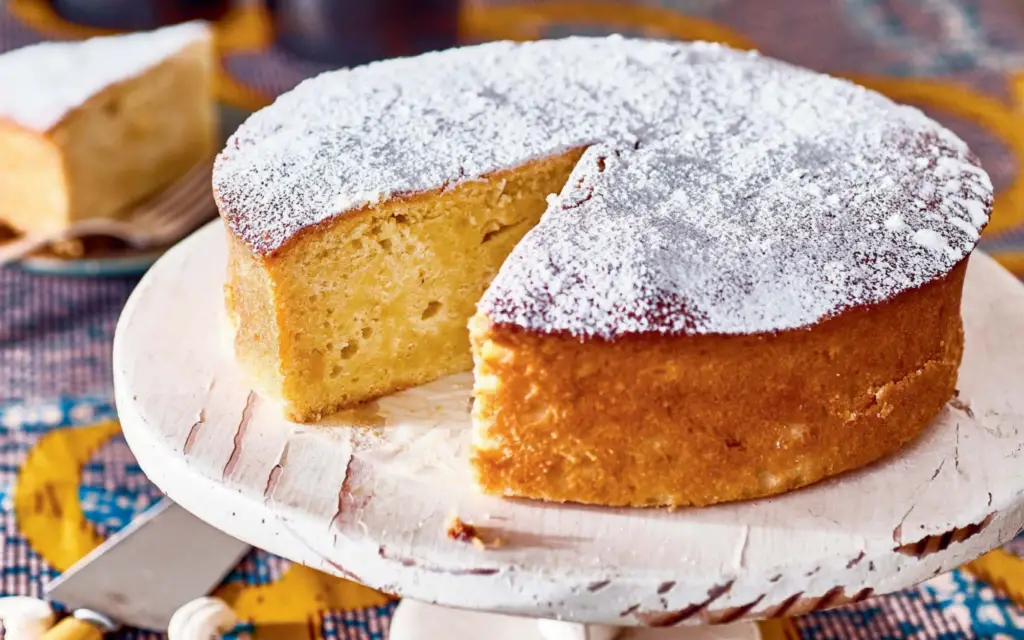
History and Background of Bolo Polana: A Culinary Heritage from Angola
Bolo Polana, a traditional Angolan dessert, holds a special place in the country’s culinary heritage. Named after the vibrant Polana neighborhood in the capital city, Luanda, this sweet treat reflects the fusion of African and Portuguese influences.
The history of Bolo Polana mirrors the diverse cultural tapestry of Angola, where the blending of flavors and techniques creates a dessert that’s both nostalgic and celebratory.
Region of Origin: Angola
The recipe for Bolo Polana has its roots in the heart of Angola, with the Polana neighborhood acting as a cultural crossroads. Drawing inspiration from Portuguese pastries and incorporating local ingredients, this dessert encapsulates the spirit of Angolan cuisine.
Bolo Polana is often prepared for special occasions, family gatherings, and celebrations, making it a cherished part of the Angolan culinary experience.
Ingredients for Bolo Polana:
Dry Ingredients:
- 2 cups all-purpose flour
- 1 cup sugar
- 1 teaspoon baking powder
- 1/2 teaspoon baking soda
- Pinch of salt
Wet Ingredients:
- 4 large eggs
- 1 cup vegetable oil
- 1 cup plain yogurt
- 1 teaspoon vanilla extract
- Zest of 1 lemon
- 1/2 cup grated coconut
- 1/2 cup sugar
- Juice of 1 lemon
Recipe for Bolo Polana:
Preparation (Serves 8-10):
Estimated Cooking Time: 50-60 minutes.
Calories (per serving): Approximately 300 calories
Ingredients Preparation:
Preheat Oven:
- Preheat the oven to 350°F (180°C).
- Grease and flour a round cake pan.
Cooking Process:
Mixing the Batter:
- In a bowl, whisk together flour, sugar, baking powder, baking soda, and salt.
- In a separate bowl, beat eggs and gradually add vegetable oil, yogurt, vanilla extract, and lemon zest.
- Combine the wet and dry ingredients, stirring until a smooth batter forms.
Baking the Cake:
- Pour the batter into the prepared cake pan.
- Bake in the preheated oven for 40-45 minutes or until a toothpick inserted in the center comes out clean.
Preparing the Topping:
- In a saucepan, combine grated coconut, sugar, and lemon juice.
- Cook over medium heat until the mixture thickens slightly.
Finishing Touches:
- Once the cake has cooled, spread the coconut topping evenly over the surface.
Serving:
- Slice and serve Bolo Polana, savoring the delightful blend of textures and flavors.
Celebrate the sweet side of Angolan cuisine with Bolo Polana, a dessert that not only delights the taste buds but also tells the story of cultural harmony and culinary artistry.
These recipes are just a starting point. Feel free to experiment with different ingredients and techniques to make these desserts your own.
Traditional Angolan desserts are a sweet and indulgent way to experience the rich and diverse flavors of Angolan cuisine. Whether you’re looking to finish off a meal or just indulge in a sweet treat, these desserts are sure to please.
Conclusion
The culinary landscape of Angola stands as a testament to the nation’s rich history, diverse cultural influences, and the resilience of its people.
From the Portuguese colonial legacy that introduced new ingredients and cooking techniques to the challenges posed by the civil war, Angola’s cuisine has evolved into a unique fusion of flavors, reflecting both its past and present.
The use of indigenous ingredients, such as cassava, plantains, and okra, coupled with the vibrant spices and cooking methods, creates a distinctive culinary identity that resonates with the nation’s cultural tapestry.
As Angola continues to recover from the impact of historical events, there is a growing recognition and celebration of its culinary heritage. The revival of traditional dishes, the incorporation of modern influences, and the emphasis on sustainable practices in agriculture contribute to a culinary scene that not only satisfies the palate but also tells a story of resilience and adaptation.
FAQ’s
What is Angolan cuisine?
Angolan cuisine refers to the traditional dishes and culinary traditions of Angola, a country located in Southern Africa. It is known for its diverse flavors, which combine indigenous African ingredients, Portuguese influences, and local spices.
What are some popular Angolan dishes?
Some popular Angolan dishes include Moamba de Galinha (a chicken stew), Calulu (made with dried fish, okra, and vegetables), and Funje (a staple food made from cassava flour).
What are traditional Angolan cooking techniques?
Traditional Angolan cooking techniques include grilling meats on an open fire, slow-cooking stews in clay pots, and communal cooking, which is an important part of the Angolan culinary culture.
What is Funge De Bombo?
Funge de bombo, also known as Angolan funge, is a traditional dish from Angola. It is made from cassava flour and water, cooked until it reaches a smooth consistency. Often served with fish or meat stews, funge de bombo is a staple in Angolan cuisine, known for its versatility and rich flavor.
What is Angolan Fufu?
Angolan fufu is a popular dish in Angola, made from pounded cassava or cornmeal. It has a smooth, dough-like consistency and is often served with a variety of soups and stews. Angolan fufu is a staple in Angolan cuisine and provides a hearty and filling meal for locals and visitors alike.
What is Bombo Com Ginguba?
Bombo com ginguba is a popular Angolan dish made with pork and peanuts. The dish is typically prepared by simmering tender chunks of pork with onions, garlic, and spices, then adding ground peanuts to create a rich and creamy sauce.
Bombo com ginguba is often served with rice and is known for its delicious combination of flavors and textures.
What is Funge De Calulu?
Funge de Calulu is a traditional Angolan dish made of manioc flour and served with a stew usually consisting of fish, meat, or vegetables. It is a staple in Angolan cuisine and is enjoyed by locals and visitors alike.
Funge de Calulu is known for its thick and smooth texture, making it a satisfying and flavorful meal.
What is Angolan Traditional Food?
Angolan traditional food reflects the country’s rich history and diverse cultural influences. Staple dishes include funge, made from cassava or cornmeal, and muamba de galinha, a flavorful chicken stew with okra and palm oil. Other popular dishes include calulu, a fish stew with vegetables, and pirão, a thick porridge served with fish or meat.
What are some traditional Angolan spices?
Traditional Angolan spices include piri-piri (a hot pepper), calabash nutmeg, and various local herbs and seasonings that add depth and flavor to Angolan dishes.
What is Angolan street food like?
Angolan street food offers a variety of delicious snacks and quick bites, such as grilled meats, fresh seafood, savory pastries, and exotic fruits. It provides a glimpse into the daily culinary delights of Angolan life.
What are some traditional Angolan desserts?
Traditional Angolan desserts include cocada (a coconut-based treat), doce de ginguba (peanut brittle), and various sweet pastries that showcase the diversity of flavors in Angolan cuisine.
How has Angolan cuisine influenced African gastronomy?
Angolan cuisine has had a significant influence on African gastronomy, with its flavors and culinary traditions spreading to neighboring countries and the diaspora. It has become an integral part of the continent’s food culture.
What is the Angolan National Dish?
The Angolan national dish is muamba de galinha, a flavorful chicken stew made with palm oil and various spices. It is typically served with funge, a thick cornmeal porridge, and is a popular and traditional dish enjoyed by locals and visitors alike in Angola.
What is the National dish of Angola?
The national dish of Angola is “Muamba de Galinha.” Muamba de Galinha is a flavorful and spicy chicken stew that holds significant cultural importance in Angolan cuisine. This hearty dish is known for its rich combination of ingredients, including chicken, palm oil, okra, garlic, onions, and various spices such as chili peppers and ginger.
Last Updated:

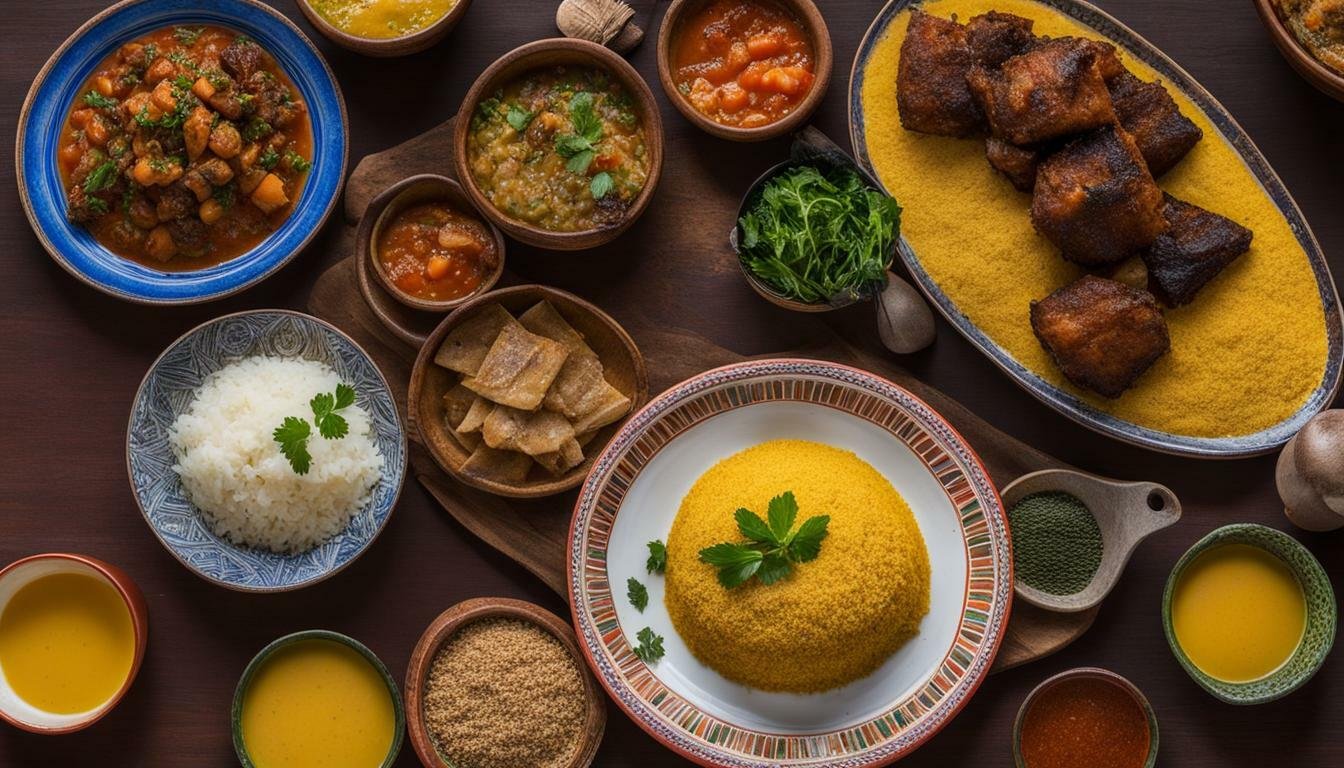
Great blog – we’re going to give these a go